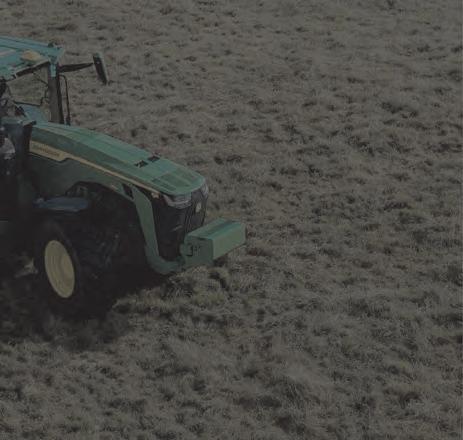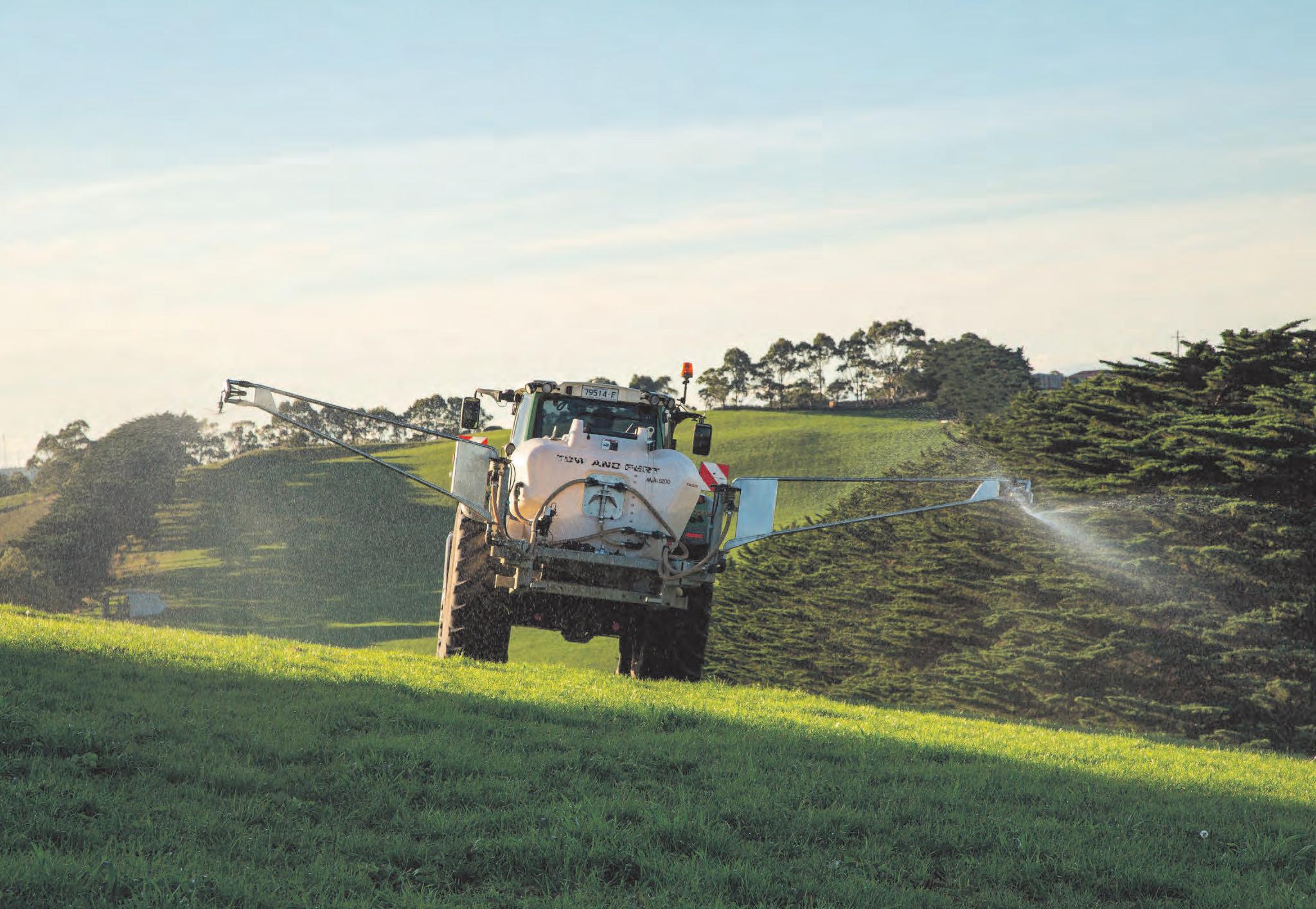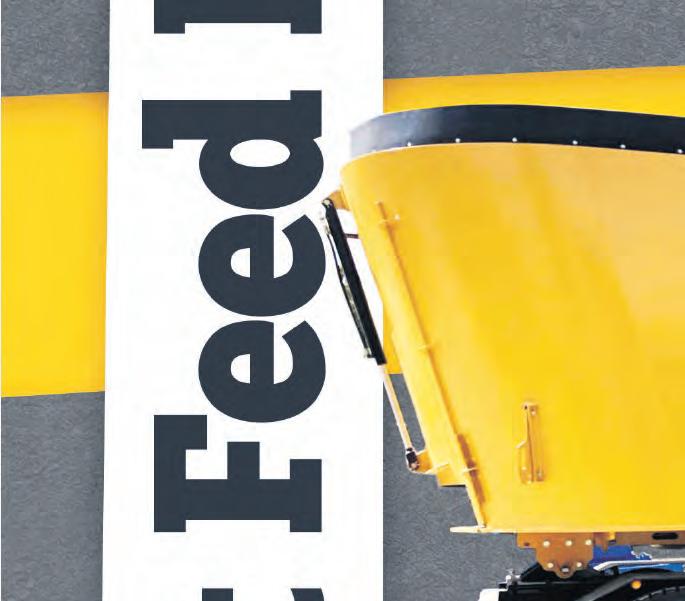
































































THE GLOBAL trade environment continues to throw curve balls, and both importers and exporters are facing disruptions on multiple fronts.
While container prices surged in immediate response to the Red Sea attacks and drought in Panama Canal, looking into trade flows paints a more detailed picture of how these challenges will boil down to impact Australian dairy.
The Panama Canal is the major trade route that connects the Atlantic and Pacific oceans, and therefore is an important route for container freight moving between Asia and the United States and Europe.
Extreme drought conditions hit the canal in the second half of 2023, and with a reliance on freshwater lake levels to moderate levels in the locks, this has reduced the overall capacity of the canal, resulting in restrictions on the number of ships passing through on any given day.
This has resulted in prolonged wait times for some vessels, and adjusted fees for others, with the canal accounting for around five per cent of global container trade.
This situation is expected to gradually normalise, however, because this is not occurring in isolation, the path to normalisation may be a longer and more costly venture.
Tension has been escalating in the Red Sea, with attacks from Yemen’s Houthi’s greatly compromising vessel safety through the Suez Canal.
The Suez Canal accounts for around 12 per cent of global trade, and roughly 30 per cent of global container movement, with the passage substantially reducing

transit time between Europe and Asia.
As such, the reality of an additional 10 days navigating around South Africa, saw the container price for the journey from Europe to China jump significantly.
According to Drewry’s World Container Index (WCI), in the three months to January 25, the cost per 40ft container jumped 396 per cent to US$4984.
While Oceania trade is not as directly affected by the reduced shipping capacity through both the Panama and Suez canals, there have been some challenges closer to home.
Months of industrial action at Australian ports (especially Melbourne) caused some disruption to the flow of trade, however, such action is due to come to a close upon the signing of a deal.
Nonetheless, the Australian dairy industry may continue to
feel some impacts of the broader global challenges, through the increased cost and reduced availability of containers, and more indirectly through the rising cost of imports, such as fertiliser.
This is likely to be the case for Australian dairy farmers, due to our reliance on imported fertilisers.
The Middle East is a large supplier of phosphates, and with restricted exports from China, this represents vital supply within the global marketplace.
So far, there has been minimal movement in global indicative fertiliser prices, with diammonium phosphate (DAP) rising six per cent over January, while urea and muriate of potash (MOP) values fell slightly, down five per cent.
However, with fertiliser prices heavily influenced by energy markets, increasing crude oil prices are signalling a tightening of the market.
On the other side of the coin, the increased cost of moving product between the US and Europe into Asia, has meant that there has been an increase in demand for Australian dairy products out of the Middle East and parts of Asia. With our geographical proximity an already advantageous feature of our trading relationships across South-East Asia, this dynamic could further aid in the attractiveness of our exports, depending on how freight rates move in the coming months.
There are an array of challenges and disruptions putting supply chains at risk across the world, however, increased demand for our exported product and an alleviation of our domestic shipping constraints will prove supportive forces.
Isabel Dando is a Dairy Australia insights and analysis adviser.










A STORM on February 13, that wrought havoc on homes and properties in Gippsland, was also instrumental in the death of a dairy farmer and some of his cows at Darlimurla.
Darlimurla is located between Mirboo North and Boolarra, in Victoria’s south-east, an area that caught the brunt of the storm, with wind gusts up to 125km/h.
A Bureau of Meteorology spokesperson said the atmospheric environment on February 13 produced severe thunderstorms with ample wind shear, that created a particular vertical structure leading to the devastating storm.
Thunderstorms, lightning, cyclonic wind, hail and rain spread rapidly across the state.
Bruce Manintveld, 50, was riding a quad bike and mustering some of his cattle when the accident occurred.
A WorkSafe Victoria spokesperson said a shed roof, displaced in 100km/h winds, struck Bruce and about half a dozen of his cows, leading to the deaths of all.
Emergency services were called to the property about 6pm, and included Victoria Police and WorkSafe Victoria.
Victoria Police and WorkSafe Victoria spokespeople have confirmed his death is not being treated as suspicious, and investigations are expected to be straightforward.
Victoria Police will prepare a report for the coroner as part of standard practice.
The storm that swept through Victoria resulted in about 535,000 households and businesses across the state being without power. A week later, about 4000 houses and workplaces were still without grid electricity.
Loy Yang A, which supplies about 30 per cent of Victoria’s power supply, was heavily affected from the early afternoon on February 13.
The lack of grid electricity also affected internet and mobile coverage for customers across Gippsland.
On February 20, in parliament, Victorian Emergency Services Minister Jaclyn Symes confirmed the government was aware that storms on February 13 would lead to significant disasters.
“Last Monday we issued a warning that Tuesday would be a catastrophic event, with category 2 cyclone winds,” she said.
“A week later, there are still almost 4000 households without grid power.”
Ms Symes said in the first 24 hours after the storm hit Victoria, there were 5660 emergency requests to SES for assistance, and 15,455 calls to emergency services.

On February 16, Victorian Premier Jacinta Allan, after visiting the disaster zone of Mirboo North, announced electricity customers without power for seven days following the storm would be eligible for $1920 per week, for up to three weeks.
The waste levy will be waived until April 30 for storm-impacted residents in 21 local government areas. Ms Allan said this waiver would enable residents to dispose of disaster waste at their local tip, free of charge.
Portable generators were also distributed to towns affected by power outages.
State Member for Gippsland South Danny O’Brien and State Member for Eastern Victoria Melina Bath were on the ground in Mirboo North and the surrounding region — from Thorpdale to Meeniyan — on February 14, and on following days.
“There’s been enormous community stoicism,” Ms Bath said.
“Timber harvesters have contributed their assets and time to help clear roads of fallen timber.”
Farmers from South Gippsland to East Gippsland reported to Dairy News Australia that they had to dump at least two days of milking.
This was for various reasons, including local
milk processing factories being at storage capacity and lack of road access for trucks into farms.
The dairy processing companies have provided compensation to farmers for dumped milk.
But a week after the storm, some farms around Stoney Creek were still without grid electricity and relying on generators.
“After the storms in 2021, a lot of farmers purchased generators at great expense to themselves, to build their capacity for situations like this, where there are power outages,” Ms Bath said.
“That means farmers have been able to continue milking their cows.”
On February 20, in parliament question time, Ms Bath asked Ms Symes when the government would announce a comprehensive clean-up package for this disaster.
Mis Symes said the Victorian Government had registered the disasters on February 13 with the Federal Government and sought joint funding arrangements for the clean-up.
“Emergency recovery is trying to sort out issues around green waste and asbestos cleanup,” she said.
“As more details about the streams of support become available, the Victorian Government will communicate that to the


community.”
Ms Bath urged thegovernment, in question time, to utilise the private assets of Forest Fire Management Victoria to assist with clean-up.
Ms Symes invited Ms Bath to put her in touch with relevant people who can assist.
“The experience from the 2021 storms is that a lot of material can be made into fence posts and firewood for community use,” Ms Symes said.
“The Victorian Government will work with local government to facilitate recovery.”
On February 20, the Victorian Government announced an independent review into the preparedness of energy distribution companies to respond to extreme weather events.
The review will include assessing the resilience of physical grid infrastructure, the effectiveness of actions to restore interrupted energy supply and the effectiveness of information and communication platforms and services.
“As the climate changes, catastrophic events and destructive weather patterns will become more frequent and more extreme, and it is critical electricity distribution networks are able to mitigate, manage and recover quickly from these events,” Victorian Energy and Resources Minister Lily D’Ambrosio said.


CLAIMS THAT membership of peak dairy body Australian Dairy Farmers lacks value-for-money may be put to the test in court following a stalemate in negotiations with the Victorian Farmers Federation over unpaid fees.
The long-running dispute between the two advocacy groups has failed to resolve the issue of $500,000 owed by the VFF to ADF.
ADF president Ben Bennett said ADF had endeavoured to pursue a resolution via mediation and negotiation.
“It has become apparent that the only way to resolve this matter will likely be via court action,” Mr Bennett said.
“ADF has been very patient over the past 12 months.
“(But) the parties are too far apart.”
Mr Bennett said the ADF Board considered it had a fiduciary duty to its members to pursue the outstanding debt that it said was ‘unreasonably withheld’ by the VFF.
“Farmers should be aware these are dairy farmers’ levies that have been collected by VFF on the grounds they would be remitted to ADF.
“Not only has VFF withheld these funds, but the dairy farmer commodities group of VFF, the United Dairy
Farmers of Victoria, themselves, have continually requested that VFF remit these funds to ADF.”
A statement from the VFF said ADF membership fees were ‘unfair’ and did not represent value for money for all Victorian dairy farmers and UDV members.
The VFF notified the ADF in October 2022 that it would no longer pay fees under its current membership structure.
It claimed that after more than 12 months of requests by the VFF for negotiation, a membership fee offer was made by ADF on Friday, February 9 and expired three days later.
The deadline ended two days before the next VFF board meeting.
“The VFF is disappointed that ADF is not negotiating in good faith, despite knowing the VFF board’s meeting (date),” the statement said.
VFF had no comment on any prospective legal proceedings, but said it continues to consider the needs of all dairy farmers.
A spokesperson for ADF said there had been a ‘reasonable’ amount of communication during the past 12 months.
“Any opinion that ADF sat on its and hands and didn’t respond is not a reliable one,” the spokesperson said.
“When Ben Bennett was elected ADF president, the first thing he did within hours of being elected was to go to the VFF offices to talk about
this issue and there has been a lot of negotiating both before and after that — the VFF didn’t sit on their hands either.
“But the negotiations have come to nought.”
Mr Bennett said the issue of the outstanding fees was not ‘small chips’ and that the door was open to negotiate in good faith.
“We’ve got to be mindful that we are custodians of institutions and that personalities come and go, and I will too one day,” he said.
“The big thing is that we need to have connection with our farmers and, more importantly, have the mandate of our farmers.
“We don’t do this in a light manner.”
Mr Bennett rejected claims that ADF members were not getting value for money.
“It’s a bit of a throwaway term,” he said.
“Consider the mandatory code for holding a fixed minimum price for milk.
“In the past that price could float and if it is put up in Canberra one day that it become a floating price again, then that could be worth a billion dollars to dairy farmers and we’d be fighting for that not to happen.
“That’s worth a billion dollars to us, so that makes the half a million (membership) dollars a pretty good investment by farmers, don’t you think?”
Mr Bennett said he thought the

VFF ‘cherry picked’ bigger issues.
“I get the impression that VFF is simplifying a lot of things and that’s all good and dandy, but I think we need to be more dynamic and that’s to be pragmatic on issues instead of letting them balloon out.
“We need to be proactive on
Primary producers in 15 Queensland local government areas can now apply for low-interest loans of up to $250,000 to help them recover following Tropical Cyclone Kirrily.
The loans are available in Boulia, Burdekin, Burke, Charters Towers, Moreton Bay, Cloncurry, Doomadgee, Etheridge, Lockyer Valley, McKinlay, Mount Isa, Richmond, Townsville, Western Downs and Winton.
Eligible primary producers in these areas can also apply for up to $100,000
in concessional working capital loans to continue doing business and up to $5000 in freight subsidies.
In addition, Balonne, Doomadgee, Maranoa, Mount Isa, Somerset, and Southern Downs councils can now access assistance for clean-up operations and the restoration of damaged essential public assets such as roads and bridges.
Bulloo, Murweh and North Burnett Councils can also access funding for repairs to their local road network.
EastAusmilk summarised the support:

ɋ Disaster Assistance Loans: Up to $250,000 for producers to repair or replace damaged assets like plant and equipment, to repair premises, or to replace stock and maintain liquidity. Contact QRIDA on 1800 623 946 or via www.qrida.qld.gov.au
ɋ Essential Working Capital Loans: Up to $100,000 for primary producers to allow for the continuation of operations, including paying wages, rents or rates, purchasing items such as fuel, fodder and water, or for the transportation of
We changed to BEST-START THRIVE this season - it’s been an absolute game-changer for calf health and condition!
smaller things and yes there are a lot of them.
“We should adapt that philosophy between all of us because we are all facing a tsunami of issues and should not beat up on everyone. “An ounce of prevention is better than a pound of cure.”
livestock and produce. Contact QRIDA on 1800 623 946 or via www.qrida.qld. gov.au
ɋ Freight subsidies: Up to $5000 for primary producers to assist with the movement of stock, feed, machinery, fuel, water and building or fencing materials. Contact DAF on 13 25 23 or via www.daf. qld.gov.au
These programs are in addition to other assistance previously announced and outlined here: https://www.qrida.qld.gov.au/ primary-producers






WINSOME ANDERSON is still in shock after she was announced the 2024 recipient of the Bette Hall Women in Dairy Award at International Dairy Week.
The award recognises the outstanding contribution of a female in the dairy industry and you certainly couldn’t look any further than 87-year-old Winsome to meet that criteria.
Born into a dairying family, Winsome’s love for cows, in particular Jerseys, began at a very young age with her family’s Lucerne Vale and Glenwyn studs.
She was quick to get in the ring showing cows, and that loved has extended over the generations of her family.
In fact, she recently watched her eight-yearold great-grandson (sixth generation) in the ring for the first time at IDW this year.
“The heifer he was leading was giving him a hard time and I was thinking from the sideline ‘just hang in there’ and he did such a great job,” Winsome said.
“I am very proud of my family and what they have done with the Jersey breed over the years.”
Winsome’s love of Jerseys has endured the generations, although she acknowledges there are many great cows in Australia today, no matter what colour their skin.
“IDW is such a great thing for the industry. I can remember in the early years standing out in the hot sun waiting to lead cows out into the ring; these days the facilities are amazing.”
In 1961, Winsome established King View Jersey Stud with her husband Bert.
King View was successful and well known across many local shows, fairs and, of course, the big one of the time — Royal Melbourne.
In 1976, Bert and Winsome imported bull Dreamer’s Margarethe Royal (D.M.R) from the island of Jersey.
Import restrictions meant he was sent to New Zealand where his semen was collected for the Australian and New Zealand market.
The couple went on to import two more bulls over time, which actually made it on to Australian soil after restrictions were lifted.
While there have been many, many Jersey cows bred over the years, Winsome’s favourite was 1976-born Kings View Linda 64th, affectionately known as Gina — the top lifetime production cow five years in a row at Royal Melbourne.
Gina’s last trip to Melbourne was as a 20-year-old when the Anderson family were honoured by the Royal Agricultural Society of Victoria for a centenary of continuously exhibiting Jerseys. Gina died at 24 and is buried on the Clyde property.
In 1987, Bert died unexpectedly and Winsome continued milking in the old conventional back-out dairy with 12 stalls and six milking units.

Two years later the herd was split between their three boys — Ian, Rob and Lindsay —with Ian taking on the Kings Lake prefix.
The dairy industry has given Winsome so many fond memories and connections over the years.
She attended every World Jersey Cattle Bureau conference from 1972 to 2018 and remains an active and valued member of the Central Gippsland Jersey Breeders Club and South Gippsland Club, and remains a strong supporter of youth programs and events.
On three occasions Winsome has visited
Windsor Castle and she even met the queen in 1992.
She received a distinguished service award in 2021 for her ongoing promotion and support of Australian Jerseys along with the president’s medal from the Royal Agricultural Society of Victoria in 1996 and the centenary medal in 2001.
Winsome has also established a museum at her home at Nar Nar Goon in Gippsland, with memorabilia including paper clippings, photos, herd books, show ribbons and antique dairy equipment on display.
She was inundated with well wishes from across the globe after receiving the Bette Hall award.
“I am honoured, stunned, speechless and very emotional to receive this award and it was such a shock.
“No-one in the family said anything, right down to the five-year-old who knew,” she laughed.
“There have been many ups and downs over the years but I remain proud to be a dairy farmer and proud of my family for continuing on the legacy over the years.”








CowManager provides 24/7 real-time data, so you can make the best decisions for your herd. Our ear sensors measure ear temperature combined with behaviour, resulting in more accurate and earlier alerts.

Never miss a heat, identify at-risk cows in the dry period and catch diseases before a cow even shows clinical signs. Together, we can do better. www.cowmanager.com




THE KEYNOTE speaker at this year’s Australian Dairy Conference was on a mercy mission to protect the agricultural industry in his own country.
Andriy Dykun, president of the Milk Producers of Ukraine and chair of the Ukrainian Agri Council, was also the Deputy Minister of Agriculture in Ukraine 2014-2015.
In his opening remarks to the ADC, Andriy commended Australians for living on an island. In comparison, Ukraine is landlocked by neighbours who are all interested in invading his country.
Andriy leads the co-operative organisation representing the interests of Ukraine’s 1100 farms that includes 150 dairy producing farms.
These dairy farms produce 40 per cent of the raw milk processed in Ukraine into products similar to the Australian dairy industry — especially liquid milk and yoghurt.
Andriy said prior to the war with Russia, Ukraine was classified as one of the top 20 milk producing countries in the world, and steadily moving towards being classified among the top three.
In 2021, it was in 21st spot, producing 8,713,900 litres; one spot below Australia, producing 8,858,135 litres.
Prior to the war, the International Finance Corporation (IMF is a division of the World Bank Group) was assisting Ukraine to help its farmers improve efficiencies, lower costs of production and increase volume.
At the time, most milk was produced for domestic use and the IMF identified stability in the sector could be accelerated by farmers adopting improved technology, production and management processes.
This would in turn increase production to the volumes necessary to meet forecast export markets.
Andriy said there were no standalone dairy farmers; rather, they were grain growers who operated dairies as an added value side venture.
These dairy farms milk between 200 and 700 cows and the animals are housed in barns for most of the year.
The IMF identified value adding as key to enabling dairy expansion in Ukraine.
The IMF, with the support of the Austrian Ministry of Finance, and in partnership with Ukraine’s Association of Milk Producers, developed the Dairy Development Project to fast-track volume increase in Ukraine.
This would be expedited by increasing grain volumes and turning some land into pasture

for harvesting fodder — this vertically integrated supply of cattle feed would be utilised to increase herd sizes and therefore milk volume.
At the same time, investment would be made into milk processing factories to enable them to manufacture more dairy products for export markets.
This project has been disrupted by the war between Ukraine and Russia.
Andriy said all farms in Ukraine are owned by co-operatives and leased by a farmer to produce food, most of which is sold locally.
Even with bomb craters making some of the farm non-arable, the farmer is still expected to pay rent to the owners.
Andriy held the audience in awe as he described the war in the occupied territory of his home country.
Thousands of cows have been killed by bombs, and farmers in the occupied territory have been displaced — he suspects some farmers are in detention, because they cannot be accounted for.
Andriy told stories about farms occupied for periods of one month to six months by military forces; farms in the occupied territory which have then been destroyed, along with tractors, buildings and herds of cows.
A new milk processing factory built and
opened just before the war with Russia began, is now within the occupied territory and not operating.
Andriy said it was expected to take hundreds of years to return Ukraine’s arable land on the frontline of the war to its full cropping status.
In comparison, other farms outside the occupied territory are expanding their production.
Andriy said one of the challenges now was to increase dairy herd size to meet the country’s demand for milk as a nutritional food.
Andriy is privileged to be allowed to travel out of the Ukraine.
In an interview with Dairy News Australia, he said men aged 18 to 60 years old were obligated to serve in the military, and were not allowed to travel out of Ukraine.
Andriy has special dispensation because he travels overseas to raise money to protect the infrastructure that enables Ukrainian farmers to keep operating.
Andriy told Dairy News Australia donated money pays the military to protect power and water infrastructure, roads and processing factories.
The military needs vehicles and arms to protect the nuclear power plants, water infrastructure, transport routes and processing factories, to enable agriculture in general and the

dairy industry in particular to keep functioning during the war.
Andriy said farming inside the 1500km frontline of the war — the occupied territory — has been disrupted, but beyond a 40km buffer zone, the remainder of the country is operating as normal.
He said schools, retail centres and other businesses, farms, milk processing and other factories are operating as normal.
Farmers in the obligatory age group are part of the military, which means farms are being worked by men aged 60-plus years, women and youths.
Farmers are also fulfilling a social function, providing local residents and the armed services with food.
“We deliver between 30,000 to 50,000 boxes of food each month to displaced people and local residents,” he said.
“We rely on local farmers to know who needs the food.
“We also provide food to our military forces.”
Andriy said people who are internally displaced by the war — who used to live in the region now occupied as the frontline — receive an allowance from the Ukrainian Government, but are also dependent on family, friends and aid organisations for daily help with housing and food.
As part of his visit to Australia, Andriy was meeting with representatives from key dairy industry organisations, as he looks beyond the war between Ukraine and Russia, to a time of rebuilding.
“Today, our plan is to survive,” Andriy said.
“Rebuilding is for tomorrow. Rebuilding tomorrow is not as urgent as surviving today.
“After the war, we will need to find ways to add value to our farm production and processing.
“After the war, when we have won, we will have the manpower to rebuild our country.
“I’m in Australia to meet with people and find opportunities for what we could do within our dairy sector as we rebuild after this destruction.”
Since the onset of the war, Australia has provided Ukraine with nearly $1 billion in aid, including $730 million in military aid.
In 2023, as part of Operation Kudu, more than 1200 Ukrainian soldiers underwent training from Australian Defence Force instructors. Attendees at ADC were encouraged to bid in a silent auction on two paintings.
The silent auction raised $7800 for Andriy to take back to Ukraine. Further donations are still being collated.


MORE THAN 600 delegates from around Australia and the world were in Melbourne for this year’s Australian Dairy Conference, from February 12 to 14.
This year was the 20th conference, with attendees from every Australian state and the ACT.
Dairy farmers were well represented among the crowd, as well as delegates from milk processors, banks, universities, other research organisations and service industries for the dairy sector.
Then there were the international attendees. Among many others were a Danish dairy farmer representing the European Dairy Federation, its chairman, Sjoerd Ydema; Andriy Dykun, president of the Milk Producers of Ukraine and chair of the Ukrainian Agri Council; Nuffield Scholar from Scotland, Claire Taylor; New Zealand dairy farmer Chris Falconer; and Canadian dairy farmers Jennifer Howe and Ben Loewith.
There were presentations from local and international speakers, with topics as varied as breeding values, genomic selection including Cinder (think Tinder) for Cows,

artificial intelligence, finding hope in the aftermath of disasters, the impact of government regulation on the dairy industry, nitrogen and methane emissions, and forging great change to create a legacy.
Conference delegates heard from five finalists in the Young Dairy Scientists Communication Award.
The awardee was announced at the conference dinner (see page 10).
The theme of this year’s conference was ‘The Power of Purpose’.
“Purpose drives everything we do.
As dairy farmers, our purpose lays at the core of why we do what we do, and why we love what we do,” conference programming committee chair Michael Rood said.
He challenged attendees to be open to listening to and willing to learn from other people and be involved in creating change in their industry.
“We want dairy farmers to get comfortable with the uncomfortable, challenging ourselves and defining what we really want to achieve,”
Michael said.
“This could be a small purpose-related farm goal, or a larger purpose-driven ambition to change your dairy landscape.”
At the conference dinner, there

was acknowledgement of the origins of ADC, from a small group of dairy farmers in the Shepparton region (home of Dairy News Australia), who wanted to hold an event that challenged and inspired those working in the industry.
“They were visionaries who wanted to lift the bar in the industry,” said Andrew Tyler, a dairy farmer from Tongala, who chaired the 2013 conference organising committee.
Dairy Australia managing director David Nation said the challenges felt by dairy farmers were not unique to Australia, but shared around the world.
He said this was a key reason why ADC was such a pivotal event, bringing international speakers to Australia.
“We need to identify early stage innovations that will advantage our industry,” David said.
Australia’s dairy farming sector was unique because of the scale of production, size of herds and farmers’ pasture-based management systems.
“In Australia, we focus on how to grow grass with less inputs,” David said.
“We have a lot of technical proficiency, making the most of what we have.”



He said the challenges for the industry continued to be proving to consumers and government that dairy farmers care for the environment and care about animal welfare.
David encouraged attendees to engage with Dairy Australia to understand the levy-funded group’s “helicopter view of the industry”.

Outgoing ADC cair, Tom Acocks,
who is also a dairy farmer at Rochester, in northern Victoria, singled out dairy farmers Andrew Tyler (Tongala, Victoria) and Liza Fahey (Terang, Victoria) at the conference dinner. He presented Andrew and Liza with mementos celebrating 10 years of their involvement with the Australian Dairy Conference Board of Directors.












































THE YOUNG Dairy Scientist Communication Award has become part of the career trajectory for many entrants in the past.
This year’s finalists were across a range of research topics.
The awardee was announced at the Australian Dairy Conference dinner, and a bursary from Gardiner Australia.
The prize went to Laura M. Jensen, a scientist with Agriculture Victoria.
There were five finalists vying for this year’s award.
Komahan Sivanandarajah is a PhD candidate with Massey University, New Zealand.
He is researching the efficacy of plantain, in a mixed pasture blend, for its ability to alter fermentation in the rumen and reduce gas production and therefore nitrogen and methane emissions.
Komahan is also researching plantain’s ability to reduce nitrogen leaching into the soil profile.
He is halfway through a four-year research project.
Boris Sepulveda is originally from Colombia, and is now a PhD candidate working with Agriculture Victoria.
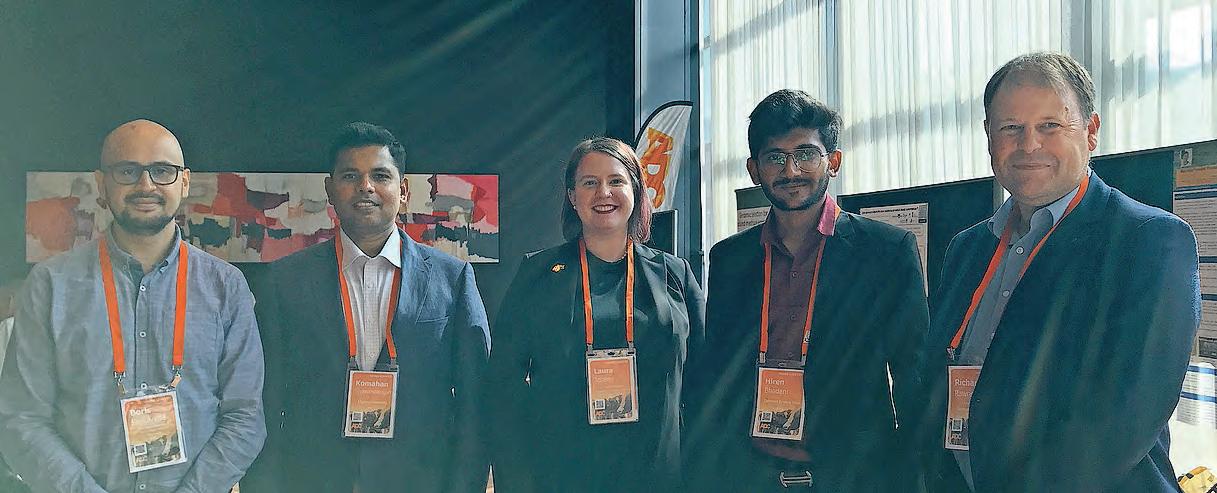
In a collaborative project between Australia and Spain, Boris is seeking to identify the variation in methane emissions between cows.
His research should articulate into a breeding value for reducing emissions in the cattle industry.
Boris has been working with a core number of cows and is now looking to extrapolate his research into the paddock.
“We need about 10,000 more cows to build data accuracy into this project,” he said.
Hiren Bhadani is a masters research student, working in collaboration with the University of Tasmania, Fonterra Australia and a dairy farmer at Cressy, Tasmania.
He is researching how to reduce fertiliser use without creating a negative impact on pasture growth and soil health.
The involvement of a dairy farmer in the project has enabled Hiren to use 50 hectares of land, split into four plots, to identify and apply a variety of fertiliser methodologies.
One of the plots is a control plot.
Laura M. Jensen is a PhD student researching the effect of heat stress on cows, in a collaborative project with Agriculture Victoria and La Trobe University.
Laura’s questions include, can we use sensor data to build a data base that improves the prediction of heat tolerance and can be articulated into a reliable breeding value?
Laura said she was now seeking to increase the number of cows she is gathering data from.
To do this, she needs farmers to nominate their cows for her project.
“If your cows are already wearing collars, or other wearable sensors, they can be nominated for this project,” Laura said.
Pia Benedetti Vallenari is a student with the University of Tasmania, and had to attend the conference presentation virtually.
After suffering budgetary constraints, Pia identified an offthe-shelf solution for diagnosing sub-clinical ketosis in milking cows.
She identified a blood diagnostic tool used by people and readily available at chemists that can be used to diagnose ketosis in milking cows.
“Using this tool doesn’t hurt or impede the cows as they walk into the dairy,” Pia said.
“Research suggests 12 cows is a big enough sample to identify if there is any ketosis in the herd.
“This tool is a cheaper way of checking for ketosis, than bringing in the veterinarian and sending blood to a laboratory for diagnosis.
“If three cows show a positive sample, that then leads to veterinary care.”
To further her research, Pia is now seeking farmers who can take up this technique and report their findings to her.
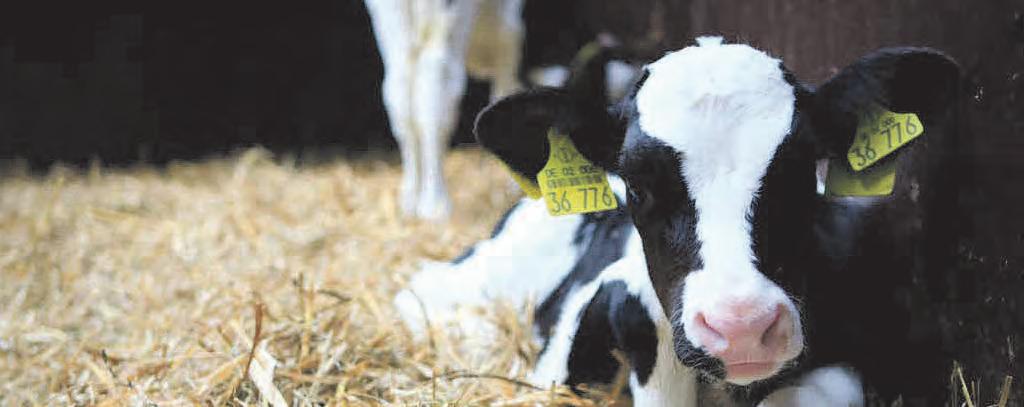














Representing the European Dairy Federation was its chairman Sjoerd Ydema, a dairy farmer from Denmark, with Harper Kilpatrick, a dairy farmer from Koroit,




















 All originally from Colombia, Antonia Mesa a dairy farmer at Cooriemungle, Victoria, Andrews Spragge from Pacific Agri Supplies and Jorge Massa Plaza, a dairy farmer at Cooriemungle, were keen to catch up with guest speaker, Juan Moreno (second from left), CEO of STgenetics and visiting from the US.
Reece Donhardt and Tom Vitkunas, dairy farmers at Nangkita Dairies P/L, Mt Compass, South Australia. Tom said his attendance at ADC 2024 was supported by Dairy SA.
Dairy farmers Renata Cumming and Matt Grant from Grant Farms, Naringal, Victoria.
Dairy farmers Ruth Kydd, Kydd Family Company, Myrtle Park, NSW; Michele Lawrence, Janefield Dairy, Meander, Tasmania; Trish Hammond, MPH Farming P/L, Labertouche, Victoria; and Ann Gardiner, M&A Gardiner, Bamawm, Victoria.
MC for ADC 2024 Tom Newton, with Jeff Odgers from Shepparton, a director of DataGene. For more photos from ADC 2024, go to: www.dairynewsaustralia. com.au
Celia Hobbs, a dairy farmer at Lockington and member of Fonterra Australia’s Suppliers’ Council, David Colson from Dairy Shelters Australia, and Fiona Kent, from Westpac, who is also a dairy farmer at South Purrumbete.
Annelie Foskett from Swan Hill; with dairy farmers Sally Bethune, from Lake Boga, Victoria; and Lucy Collins, from Dixie Park, Victoria.
All originally from Colombia, Antonia Mesa a dairy farmer at Cooriemungle, Victoria, Andrews Spragge from Pacific Agri Supplies and Jorge Massa Plaza, a dairy farmer at Cooriemungle, were keen to catch up with guest speaker, Juan Moreno (second from left), CEO of STgenetics and visiting from the US.
Reece Donhardt and Tom Vitkunas, dairy farmers at Nangkita Dairies P/L, Mt Compass, South Australia. Tom said his attendance at ADC 2024 was supported by Dairy SA.
Dairy farmers Renata Cumming and Matt Grant from Grant Farms, Naringal, Victoria.
Dairy farmers Ruth Kydd, Kydd Family Company, Myrtle Park, NSW; Michele Lawrence, Janefield Dairy, Meander, Tasmania; Trish Hammond, MPH Farming P/L, Labertouche, Victoria; and Ann Gardiner, M&A Gardiner, Bamawm, Victoria.
MC for ADC 2024 Tom Newton, with Jeff Odgers from Shepparton, a director of DataGene. For more photos from ADC 2024, go to: www.dairynewsaustralia. com.au
Celia Hobbs, a dairy farmer at Lockington and member of Fonterra Australia’s Suppliers’ Council, David Colson from Dairy Shelters Australia, and Fiona Kent, from Westpac, who is also a dairy farmer at South Purrumbete.
Annelie Foskett from Swan Hill; with dairy farmers Sally Bethune, from Lake Boga, Victoria; and Lucy Collins, from Dixie Park, Victoria.

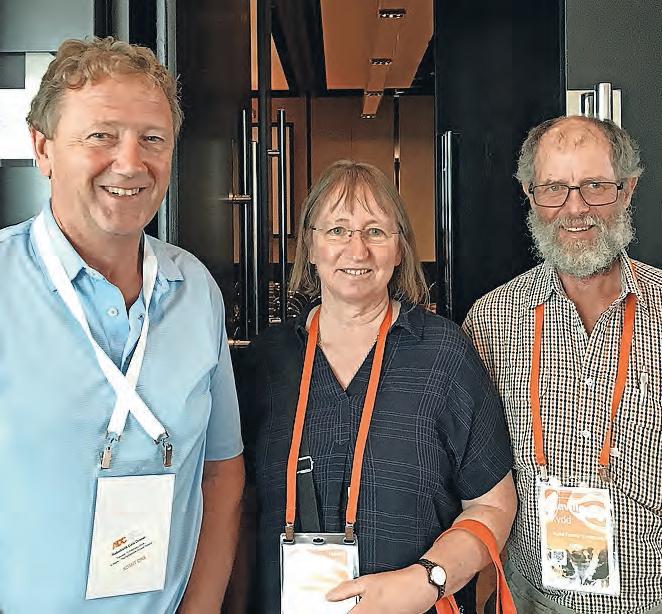







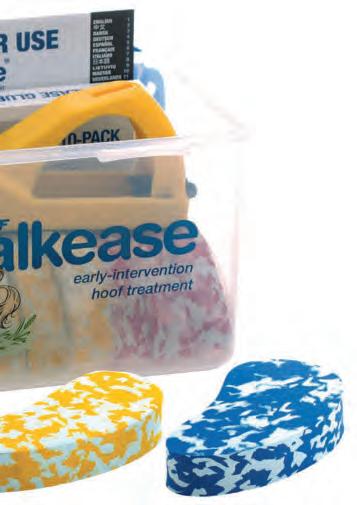

 Paul and Emma Osborn, dairy farmers from Tinamba, Victoria. For more photos from ADC 2023, go to: www. dairynewsaustralia.com.au
Ken Lawrence, a dairy farmer from Jindavick, with Sarah O’Brien, a dairy farmer from Dennison, and Charlie McElhone from Dairy Australia.
Gardiner Foundation supported the attendance of young dairy farmers from Young Dairy Network (YDN), western Victoria. Pictured: Donna Gibson (Gardiner), Ashley Rosewarne (Gardiner), Zoe Greenslade (YDN) from Peterborough, Patrick MacDonald (Gardiner), Meghan Lodwick (Gardiner), Max Bond (YDN) from Timboon, Galina Fidler (Gardiner), Allan Cameron (Gardiner), Gregor Mews (YDN) from Koroit, and Matthew Swayn (YDN) from Nalangil.
Jennifer Howe and Ben Loewith, from Summit Station Dairy and Creamery, Ontario, Canada, with another presenter at the Australian Dairy Conference, Dr Amy Jackson, and Dairy Australia’s Kendra Campbell.
Adam and Cath Jenkins, of Purrumbete, in south-west Victoria.
Michelle Payne and Rose Hewartson, both from Brisbane. Rose donated a painting to ADC 2024 to be in a silent auction to raise funds for the Ukraine Agri Council.
Paul and Emma Osborn, dairy farmers from Tinamba, Victoria. For more photos from ADC 2023, go to: www. dairynewsaustralia.com.au
Ken Lawrence, a dairy farmer from Jindavick, with Sarah O’Brien, a dairy farmer from Dennison, and Charlie McElhone from Dairy Australia.
Gardiner Foundation supported the attendance of young dairy farmers from Young Dairy Network (YDN), western Victoria. Pictured: Donna Gibson (Gardiner), Ashley Rosewarne (Gardiner), Zoe Greenslade (YDN) from Peterborough, Patrick MacDonald (Gardiner), Meghan Lodwick (Gardiner), Max Bond (YDN) from Timboon, Galina Fidler (Gardiner), Allan Cameron (Gardiner), Gregor Mews (YDN) from Koroit, and Matthew Swayn (YDN) from Nalangil.
Jennifer Howe and Ben Loewith, from Summit Station Dairy and Creamery, Ontario, Canada, with another presenter at the Australian Dairy Conference, Dr Amy Jackson, and Dairy Australia’s Kendra Campbell.
Adam and Cath Jenkins, of Purrumbete, in south-west Victoria.
Michelle Payne and Rose Hewartson, both from Brisbane. Rose donated a painting to ADC 2024 to be in a silent auction to raise funds for the Ukraine Agri Council.
THE ADOPTION of virtual fences on dairy farms is benefiting from refinement of the technology, resulting in an improved bottom line for farmers.
The technology, however, is not permitted in Victoria.
The Dairy Industry Leaders’ breakfast on Thursday, January 18 at International Dairy Week in Tatura saw 50 dairy industry representatives and farmers hear of the advances in the technology from virtual fence company Halter.
Virtual fences have been proven to increase the productivity of dairy farms significantly.
Brett Good has worked for Halter in New Zealand and is currently Head of Tasmania for the company.
Mr Good has more than 17 years experience in agriculture and told the audience that virtual fences allowed farmers to run more sustainable and productive farms.
Australian Dairy Farmers president Ben Bennett said Victorian legislation on the prevention of cruelty to animals needed addressing and said negotiation was an ongoing process.
“The government is hostage to
some very strong animal welfare issues,” Mr Bennett said.
“I think farmers would certainly like to see the adoption of the (collars) because it is legal in some other states.
“We are collaborating with animal welfare groups.”
The Victorian Farmers Federation is considered the appropriate advocacy group for negotiating with the state government for legislative change, as the ADF is national body.
According to a federation spokesman, the VFF has committed to maintain its status to develop ‘understanding and advocacy’ for virtual fencing technologies, as discussed and published at their annual conference in July, 2023.
Case studies and live applications of the system’s app were presented at the breakfast, demonstrating how virtual fences have less impact on cattle than electric fences.
The system is fully automated and can be run from a mobile phone.
Towers are erected which can cover about 7000 cows each, depending on topography, and farmers are able to save on costs by installing the towers themselves.
“We do a coverage check on the farm so we can make sure we can
cover the farm and help determine the hardware needed,” Mr Good said.
In New Zealand, there are currently 190,000 cows contained by virtual fences.
In one case study, a farm with 1200 cows produced 80,000 kg of milk solids in one year and saved 2700 hours of labour.
Mr Good said the biggest advantage to using the system was being able to harvest grass more effectively.
“Virtual fences reduce the cost of fencing and the labour of staff going out and allocating pasture,” he said.
“Harvesting more grass to expand revenue is the gold standard of dairy farms.
“And the dairy farms that do that well are some of the most profitable dairy farms in Australia.”
CSIRO researcher Dana Campbell found in a 2019 study that more than 70 per cent of cattle responded to audio cues without need for further actions from collars.
The study also reported that virtual fences were comparable to electric fences.
More recent studies report that up to 90 per cent of cattle are responsive.
Mr Good said cows will do a boundary check to learn where the audio cues begin.

“Cattle that breach a boundary are steered back by the collar automatically by receiving audio cues at each ear to turn left and right and re-enter the intended perimeter.
“We are replacing visual cues. We also have safeguards for lame cows or for those who are spooked or bolt.”
The system also provides valuable data on the rate of feeding, chewing and rumination, by determining the frequency of a cow’s movement and pitch of its head.
“It provides real confidence to farmers, given that the market is quite financially stressed at the moment.”







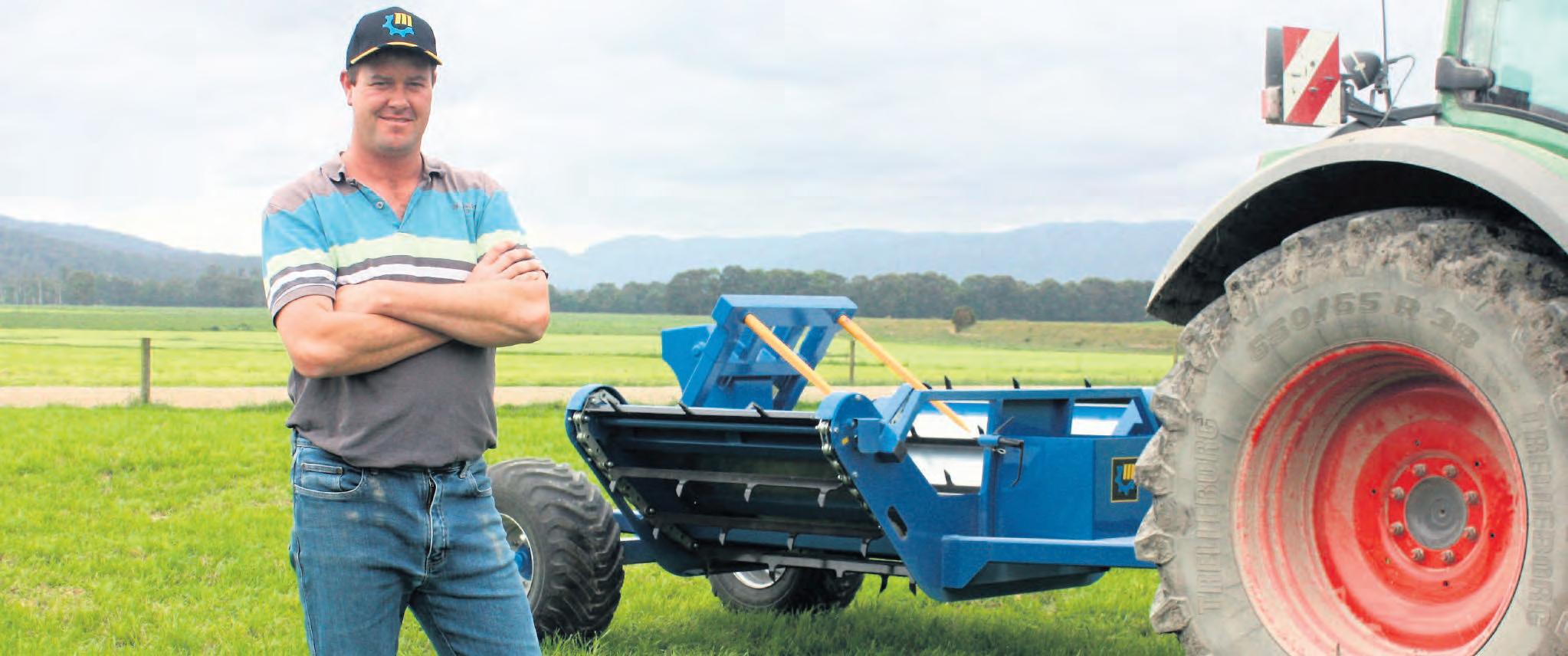




















































AUSTRALIA’S DAIRY import and export mix is “slowly trading places” — with export volumes falling sharply in recent years while imports have spiked, Rabobank says in a newly-released report.
In its Australian Dairy Sector Outlook report, Rabobank says the overall trade profile for Australian dairy is in a period of transition “driven by a confluence of factors, including lower domestic milk production, an erosion of export competitiveness and more favourable domestic market returns impacting the product mix”.
The bank expects dairy imports to “play a more significant role” in Australia’s domestic supply chain into the future, with local milk production remaining constrained and as the industry further adjusts to accommodate these shortages.
And while dairy exports are under pressure, the report says, Australia still has a sustainable dairy export sector in the long term, albeit “more focused on value-add rather then being volume driven, which means investment at manufacturing level is required”.
Report author, RaboResearch senior dairy analyst Michael Harvey, says Australia’s dairy trade mix in the future will primarily be influenced by milk availability cycles in both domestic and export markets, with the sector highly exposed to global markets and largely integrated into global supply chains.
‘Chronic
The report says Australia produced 8.129
billion litres of milk in 2022-23, marking the “third consecutive year of decline” in milk production.
“Since the most recent production high in 2020-21, more than 700 million litres of milk have been lost from the supply chain, resulting in a chronic shortage of milk for manufacturing — that is the total milk available outside what is used for domestic and export drinking milk” Mr Harvey said.
In fact, in 2022-23, the country’s milk supply available for manufacturing fell to its lowest level since the 1990s, he said.
Australia has had a long history as an exporter of dairy products and has served as a “key procurement region for international buyers, due to its reputation for product quality, accessibility and innovation”, the report says.
However, Australia has been on a slow retreat from the global dairy export arena for some time, the bank says.
“Dairy exports fell off a cliff in 2023,” Mr Harvey said.
“For the calendar year 2023, dairy export volumes were down with double digits across most products, with the largest declines in liquid milk (down 41 per cent year on year) and butter (down 52 per cent).”
Despite the reduction in domestic milk production and export volumes, however, Australia remains a net exporter of dairy products in liquid milk equivalents and still ranks as the fifth-largest dairy

exporter in the world, with four per cent of global trade.
And long term, Rabobank believes Australia has a sustainable dairy export sector.
“However, how the export sector performs will remain cyclical given its commodity nature and this will have some impact on farm gate pricing, both on the upside and the downside,” Mr Harvey said.
“And unless there is a transformational shift in the trend for domestic milk production, less milk supply and a modestly-expanding domestic market will mean Australia has less milk solids for export.
“We expect this will continue to force export market consolidation and intensify the need for a focus on value over volume, requiring investment from dairy companies in innovation and new technologies and partnerships with milk suppliers.”
Dairy imports have played a crucial role in the Australian supply chain for a long time, the report says. But, over the decade between 2013 and 2023, the annual dairy import volume in liquid milk equivalent has doubled.
The pace of growth in dairy imports has shifted gears in recent years, Mr Harvey said, with a broad-based lift in import volumes in 2022 and 2023.
“In 2023, Australia imported more than 1.4 billion litres of dairy product in liquid milk equivalents, excluding caseins,” he said.



“A large proportion of the import mix is bulk and ingredients — particularly butter and skim milk powder — as domestic manufacturing of these products has declined.
“But more imported dairy products are also appearing on retail market shelves.”
The bank expects dairy imports to grow even further over the medium term — driven not just by shrinking Australian milk production, but also the comparative cost advantage of imported product (due to lower overseas dairy prices) and also a spike in demand for lower-budget dairy products among Australian consumers due to cost of living pressures.
Not all doom and gloom
That said, Australia has a secure availability of local-origin dairy product, Mr Harvey said.
“And with ongoing support from retailers to source locally where possible, Australian-origin dairy products will remain readily available to consumers, though at times the pricing point for local product may trigger ‘sticker shock’ for consumers.
“The integration of imported milk solids will largely expand behind the scenes in foodservice and food manufacturing and out of sight for Australian consumers.
“More cost-effective imported ingredients can be a good thing for consumers, as it reduces food manufacturers’ raw material costs and keeps consumer prices for packaged foods with dairy ingredients more affordable.”
A conference in Geelong on March 18 and 19 will showcase new research and ideas that will shape the future of cattle breeding in Australia.
The GA 2024 Today, Tomorrow and Beyond conference hosted by Genetics Australia will feature local and international speakers, farmers and dairy and beef industry leaders.
It will be the first in-person industry-wide conference hosted by Genetics Australia after an earlier conference planned for 2020 was moved online due to the pandemic.

Genetics Australia CEO Anthony Shelly.






Genetics Australia CEO Anthony Shelly said the conference aimed to inspire the current and next generation of farmers to use genetics and other cutting-edge technologies to advance their operations.
“We wanted a platform to bring together people in the dairy and beef industries to learn how new research and ideas can improve their businesses and help create more sustainable and profitable farming systems,” Mr Shelly said.
The program will cover beef industry insights and strategies, the advantages and disadvantages of the MOET and IVP IVF systems, reduced emission feeding strategies, using semen donors and sexed semen to maximise joining outcomes, unlocking international opportunities with the World Angus Evaluation, the return on investment from 40 years of genetic improvement, the next genetic frontiers, the role of genetic improvement in creating greater integration between dairy and beef industries, the importance of estrus intensity and how IVF can be used for herd development.
Findings from Australian research into breeding healthier cows will be presented
by project specialist at DataGene and PhD candidate at LaTrobe University, Michelle Axford.
Agriculture Victoria Breeding for Sustainability and Resilience research director Jennye Price will lead a panel discussion on breeding for sustainability and resilience.
There will also be farmer panels on robotic milking, making measurable differences, and sustainable farming practices.
Mr Shelly said the conference would be a good opportunity for farmers and industry representatives to get a glimpse into the future.
“Farming is evolving at a fast pace and keeping up-to-date with new and emerging technologies is essential for achieving the best outcomes,” he said.
It is intended to hold the conference biennially.
The conference will be at GMHBA Stadium 370 Moorabool St, South Geelong. For ticket information, go to: https:// genaust.com.au/ga2024conference/
The full program can be found at: https://genaust.com.au/wp-content/ uploads/GA-2024-Program_Final.pdf
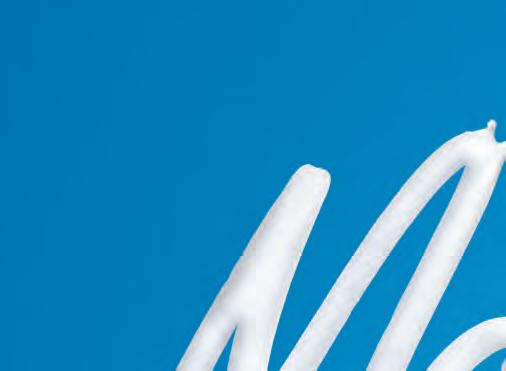






































Barastoc cares about your dairy cows as much as you do. Each element of our operation is designed to support the best possible animal nutrition and health, and maximise your production. Through all life’s stages and seasons. That’s why Barastoc is truly Made For Milk.
For more information on our range please contact your local Ridley Team of Dairy specialists on 1300 531 833 or email us on info@ridley.com.au.
BROUGHT TO YOU BY
CALL US ON 1300 531 833 FOR BULK FEED DIRECT TO FARM


FOR AUSTRALIAN dairy farmers, staying ahead of the curve means understanding that farming technology isn't just a tool — it's a team player.
Dairy farmers can harness technology’s potential to drive their businesses forward, ensuring a brighter future for themselves and their herds. How?
From tracking milk production to monitoring health metrics and even predicting breeding cycles, cow monitoring systems provide invaluable insights into the daily lives of your cows.
It offers farmers ongoing insights to optimise their dairy operations, improve on-farm efficiency, and ensure the health and wellbeing of their cattle.
And it doesn't stop when the sun goes down. With 24/7 monitoring, you can rest easy knowing that your ‘digital team’ is always on the job, keeping a watchful eye over your herd even in the dead of night.
Paul Quinlan is business development manager at Word Wide Sires Australia and has worked in the Australian dairy industry for decades.
According to him, tech teamwork is essential to the future of dairy farming. His system of choice?
CowManager ear sensors.
In fact, for more than 120 Australian dairy farmers, Paul and his co-workers are an important part of their digital dairy teams.
“CowManager is cutting-edge technology. It provides modern-day dairy farmers with a precise cow monitoring system,” Paul said.
The system has three modules: Fertility, Health and Nutrition. To Paul, the Fertility Module is an absolute must. It sends users an alert on their PC and phone whenever a cow is on heat.
“It also picks up non-cycling cows, cystic cows, any data really that’s required specifically before the mating start date,” he said.
“You don’t have to use the traditional heat detection aids, whether it’s kamars or scratchies. You use the technology to do all the work for you.”
People who don’t consider themselves savvy with technology or software have got nothing to worry about, Paul said.
“Anytime anyone is moving towards change, they get a little nervous. But we work with a variety
of different farmers, with different levels of technical abilities, that are absolutely loving it.”
This is where the teamwork aspect truly shines. It's not just about collecting data; it's about interpreting and acting upon it.
Whether it's fine-tuning breeding strategies or addressing potential health issues before they escalate, your cow monitoring system provides the insights you need to make informed choices.
“In this current climate of people looking at their breeding program and introducing sexed semen, you can utilise the technology to maximise the value of what you’re spending on genetics,” Paul said.
“Earlier pregnancies with sexed semen not only provide early and oftentimes healthier heifer calves but also contribute to the overall efficiency, maximising genetic potential and minimising downtime.”
With the support of a cow monitoring system and experienced local representatives as their full-time partners, farmers always have a dedicated team ready to analyse the numbers, identify trends, and provide actionable recommendations to optimise their herd management.
– From CowManager.
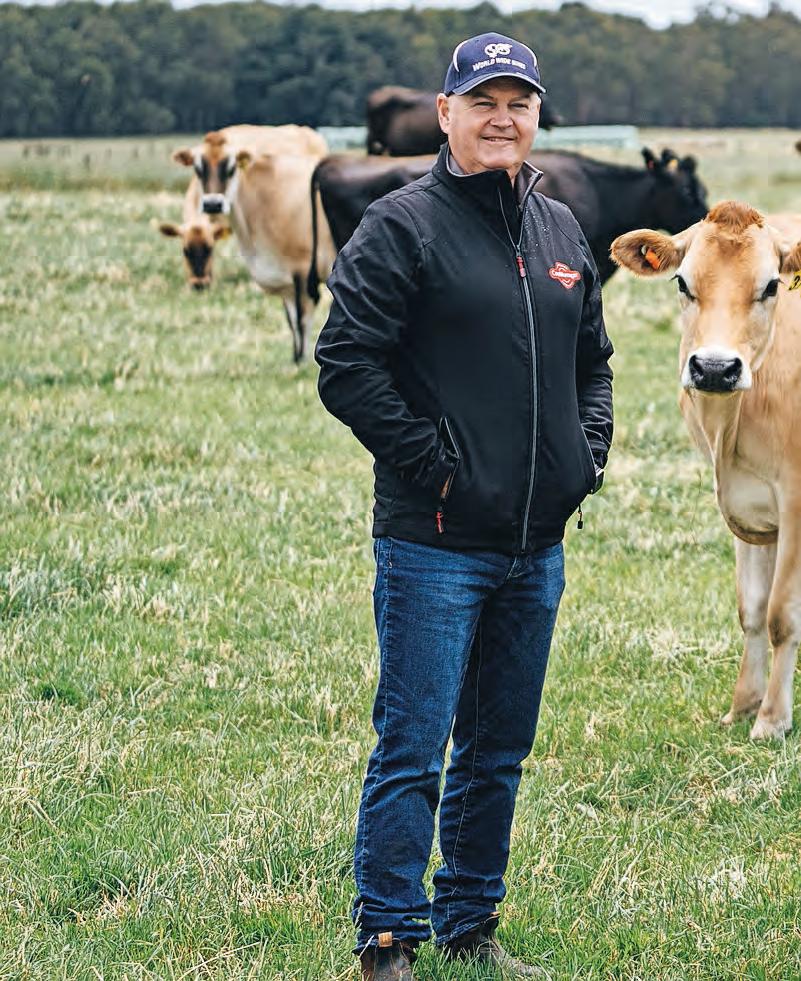





SEVEN STUDENTS from Victorian dairy regions have received scholarships from the Gardiner Foundation.
The 2024 Gardiner Foundation Tertiary Scholars are: Libby Clymo, Calivil (Shirley Harlock scholarship); Alexandra Ingram, Timmering (Doug Weir scholarship); Clara Linn, Childers (Jakob Malmo scholarship); Eloise Murnane, Warncoort (Bill Pyle scholarship); and Alysha Toohill, Kyabram; Ella Bryant, Kaarimba; and Harry Murphy, Irrewarra (Niel Black scholarship).
They are all starting their first year of tertiary study this year. Each scholar will receive $10,000 annually for three years to support costs associated with their studies.
These scholarships are granted to students accepted into courses that will benefit the Victorian dairy industry or dairy communities.
The tertiary scholarships are named in recognition of services to the dairy industry by Niel Black, Shirley Harlock, Jakob Malmo, Bill Pyle and Doug Weir.
The recipients
Alexandra Ingram, Timmering: Alexandra completed her VCE at Rochester Secondary College where she was school captain. She will study a Bachelor of Social Work at La Trobe University Bundoora. Her aim is to return to her home town and support locals during times of hardship and advocate for wellbeing. She has witnessed some of

these hardships with the Murray Goulburn dairy factory closure as well as the floods in October 2022.
Alysha Toohill, Kyabram: Alysha completed HSC at Moama Anglican Grammar. She will study a Bachelor of Health Science at La Trobe University Bendigo. Alysha has a goal of becoming a dentist, while also working toward getting her private pilot’s licence.
Ella Bryant, Kaarimba: Ella grew up on a family dairy farm and completed Year 12 at St Mary of the Angels Secondary College in
Nathalia. She will study a Bachelor of Health Science at Deakin in Geelong. Ella wants to work in radiography and provide a specialist service to smaller towns to prevent regional people having to travel greater distances for care.
Clara Linn, Childers: Clara grew up on a family dairy farm in Childers, Gippsland. She recently had a gap year after completing Year 12 in 2022 at Mirboo North Secondary College. She will study a Bachelor of Medical Studies/Doctor of Medicine at Monash
Clayton. During her gap year, she volunteered at Latrobe Regional Health. After seeing the barriers to health care access firsthand, Clara was inspired to study medicine and be part of the solution.
Eloise Murnane, Warncoort: Eloise grew up in Warncoort in Victoria’s south-west, and finished Year 12 at Colac Secondary College. Eloise will study her Diploma in General Studies at The University of Melbourne Dookie Campus with the aim to transfer into a Bachelor of Agriculture for her second year. Her love of agriculture grew from spending her early years on her grandparent’s farm, which her parents stepped in to help manage in 2018.
Harry Murphy, Irrewarra: Harry is from Irrewarra north-east of Colac. He completed Year 12 at Trinity College where he was school captain. Harry will study a Bachelor of Business majoring in Supply Chain Management and Logistics at RMIT Melbourne.
Libby Clymo, Calivil: Libby grew up on a family dairy farm in Calivil in northern Victoria and went to high school at East Loddon College. She will study a Bachelor of Physiotherapy at La Trobe University Bendigo. Libby was inspired to become a physiotherapist after tearing her ACL at a young age. She strives to improve healthcare access for farming communities, urging them to address discomfort promptly and return to work sooner.











BEGA CHEESE has announced it will close down one of its ageing Tasmanian liquid milk factories, after a challenging financial year with declining milk volumes.
It is believed Bega has identified too many upgrades required on the factory since it took over the northern Tasmanian Betta factory and brands last year.


Almost 50 northern Tasmanians will lose their jobs.
Bega bought the company from TasFoods Limited in an $11 million deal.
On February 19, Bega announced the Burnie Betta Milk factory would close, and move operations to its existing facility near Hobart..
The announcement was a blow for dairy processing in north-west Tasmania, said the Australian Workers Union, which represents the workers.


“The union’s strong preference would have been for Bega to update their infrastructure rather than rationalising the factory out of existence in the way that it has,” AWU representative Robert Flanagan said.
“The Betta Milk operation has had a footprint in Burnie for 70 years and has been a part of the fabric of that community over those years so it’s devastating the factory will be closed,” Mr Flanagan said.
“The workforce at Betta Milk has a very

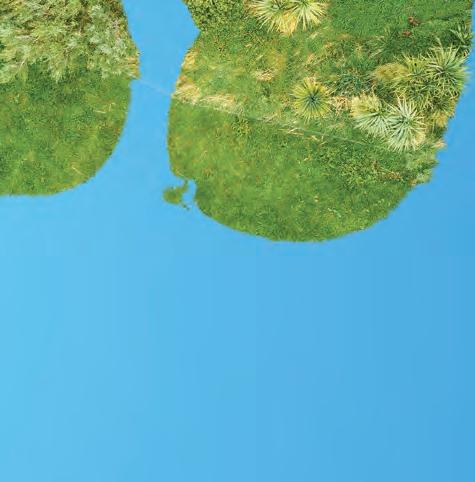


LIC’s
discrete skill set, and the union has held discussions today following the announcement with Saputo, who have a factory in Burnie, and Fonterra who have a factory in nearby Wynyard, to explore employment opportunities at their operations.
“Both companies have been supportive of seeing what they can do to place Betta Milk workers within their respective operations.” Bega suffered an after tax loss of $229 million last financial year.
Last year Bega indicated it was intending to “right size” some of the company’s assets.
“The continued decline of milk production in Australia and excess milk manufacturing capacity has created a highly competitive milk procurement environment and a disconnection between returns received from internationally traded commodity markets and Australian farm gate milk price,” the company said last year.
The Bega Group’s statutory earnings before interest and tax was $144.1 million with a loss after tax of $229.9 million.
The Victorian Country Fire Authority is urging farmers to ramp up their hay maintenance for the remainder of the season, following a surge in haystack fires, with CFA responding to more than 50 since November.
As a result, the CFA wants farmers to monitor the moisture and temperature of their hay more regularly, and to store it in separate stacks and in sheds away from farming equipment and structures.
CFA District 17 Commander Lindsay Barry said spontaneous combustion is the leading cause of haystack fires in Victoria and just one damp bale is enough to ignite a whole stack.
“We are currently in the storage phase of hay season, and there are some contributing factors that lead to ignition,” Mr Barry said.
“Unfortunately, at the beginning of the season, some bales weren’t produced to industry standard, and were stored away with too much moisture.
“Green or damp hay is susceptible to overheating, so those two in combination will make a fire.”
Mr Barry said due to the significant rain during summer, haystacks that were neither placed inside a shed nor covered with a tarp have been considerably exposed.
“The hay has been pressed for so long, and because of the summer we’ve had, the majority of fires are where hay has been stored outside and exposed to the elements.
“Water and hay don’t really mix, especially when they stack together. This creates organic decomposition which produces heat, and you end up with a hay fire due to spontaneous ignition.”
“For farmers who own hay, or who manage haystacks, we need them to be more vigilant and ensure they’re doing regular temperature checks.
For more information on preventing haystack fires, go to: http://www. cfa.vic.gov.au/hay
BULK TANK milk could soon provide greater insights into dairy herd health.
And this extra diagnostic tool could assist with farm management decisions and help Australia’s biosecurity efforts.
Dairy UP researchers investigating the use of bulk tank milk and herd recording samples to predict the risks to health, efficient production and reproductive success want these underutilised resources to play a bigger role in dairy businesses.
The investigative work has focused specifically on using milk samples to monitor dietary imbalance, bacteria disease, viral and parasitic infection.
Research team leader, Adjunct Professor Ian Lean, said expanding the diagnostic capability of bulk tank milk could reduce the risk of disease spread within and among herds.
“At an industry level this is vital for biosecurity — for example, testing for Mycoplasma bovis, the cause pneumonia, mastitis and arthritis in cattle — or monitoring other endemic diseases within a farm, region, or country,” he said.
“Insights from milk samples could help farmers make informed business management decisions to improve animal wellbeing, productivity and profit.”
Bulk milk tank urea and protein content are useful indicators of herd nutrition and could enable early and accurate detection of metabolic disorders, to guide intervention strategies.
Insights from milk samples could help farmers make informed business management decisions to improve animal wellbeing, productivity and profit.
Adjunct Professor Lean said an expansion in the average herd size and production across the past 40 years means dairy farm managers and veterinarians have less time to engage with individual cows.
“That’s why using milk to monitor aspects of the herd’s health could be a more streamlined and cost-effective way to prevent disease spread,” he said.
The next steps will involve the Dairy UP team meeting with industry stakeholders such as NSW DPI, herd recording organisation Dairy Express and milk manufacturers to map-out a way to put this research to work on-farm.
This project, called ‘Milk as a Diagnostic Tool, is part of a suite of Dairy Up cow-related research projects.
Other research includes investigating infectious diseases in calves, cattle longevity and heat stress.
ɋ Dairy UP is a collaborative R, D & E project for the NSW dairy industry. For more information, go to: https://www.dairyup.com.au





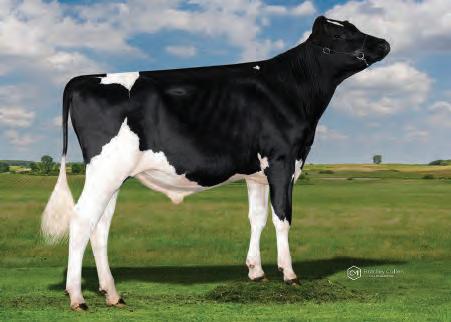


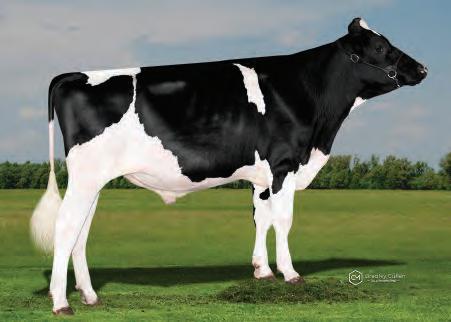




A VISITING Irish agricultural consultant says Australian dairy farmers could benefit from a government-backed dairy industry plan.
Mike Brady told WestVic Dairy’s `From Idea to Innovation’ free forum at Deakin University in Warrnambool on February 21 that a similar plan in Ireland had helped the country to add more than 50 per cent to its dairy production in less than 10 years.
“A government-backed ‘dairy industry plan’ with buy-in from all stakeholders, is a good template to follow at state or federal government level for the Australian dairy industry,” Mr Brady said.
“Good ideas lead to innovation and can transform a farm business or an entire industry,” he told the forum.
Mr Brady described the Irish Industry Dairy Industry Planned Expansion 2011-2020 as an example of an innovative idea that transformed the industry.
“There were regular stakeholder meetings with reporting back to government and every idea was researched,” he said.
“There were good ideas and bad ideas but the fact that the industry was joined up meant that every idea was researched and assessed as to whether it would fit the aims of industry.
“The target was to increase dairy production by 50 per cent and that was surpassed by 2018.
“Our dairy farmers have done very well and have been very prosperous in the past 10 years.”
The growth has continued into this decade. Mr Brady cited an Irish Times article highlighting the role of innovative products and ingredients in pushing a 30 per cent rise from prepandemic levels in food and drink exports.
“The expansion has come from inside the farm gate,” he added.
Ireland has 18,000 dairy farmers compared to Australia’s 5213, average herd size is 84 compared to 276, while milk production is 8.8 billion litres compared to 8.2 billion in Australia.

Ireland has 1.51 million cows compared to Australia’s 1.44 million while milk yield per cow is 5629 litres compared to Australia’s slightly higher 5665 litres. In 2022 Ireland produced a record 8,830,000 litres of milk.
Mr Brady said Brexit had made Irish dairy stronger.
“A third of our exports go to the UK and exports have increased since Brexit when everyone predicted the opposite.”
He added that Ireland had largely moved past challenges faced by Australia’s dairy industry like the demise of Murray Goulburn, labour, water and succession, but it still had issues to consider.
“The EU’s Farm to Fork strategy for an environmentally-friendly food system has led to protests and there’s Ireland’s Food Vision 2030 looking at water quality, biodiversity, greenhouse gases.
“I’m not saying these are poor ideas but I think the EU has gone too quickly with this. They came up with ideas we will need to embrace, but if you get them wrong there will be protests.”
Mr Brady said it was “only a matter of time” before the Australian government demanded sustainable farming.
“The advantage you have is that dairy is farther down the list for the government. Our problem in Ireland is that 40 per cent of greenhouse gases are from ruminant animals and dairying has recently increased so they are being looked at.”
He said the UK had struggled after its dairy advisory service had been privatised and then sold.
“To me, Great Britain was rudderless from a research point of view since that period. It made room for private consultants but you won’t know for 30 years whether you have wrecked the industry or been really good for it.
One factor critical to the success of Irish farms is specialisation, according to Mr Brady.
“Some farmers here like other enterprises to try to cover a bad year, but I don’t think you can be good at all the enterprises.
“Specialise in your enterprise and become as good as you possibly can.”
In Ireland there has been a move in the north towards confinement dairying but southern areas mostly remain grass-based.
Factoring the cost of land into a dairy business isn’t needed in Ireland because so little comes up for sale.
“If you want to become a profitable dairy farmer in Ireland, your most important attribute is that you choose your parents very carefully,” he said.
“Land price is not connected to our dairy profitability.”
Sharefarming is also rare because the farms are too small to split the profit.
“Our landowners don’t want to do sharefarming — it’s too complicated,” he said.
“The only opportunity for non-dairy farmers to come in and have a career in the industry is because there’s no labour.
“If they work on a farm, and none of the farmer’s kids are interested in dairying, the young worker might buy some cows and lease them back to the farmer and if he’s successful he will end up owning all the cows and leasing them to the farmer.
“But there are not a lot of full-grown partnerships.”
Crossbreeding is another system largely ignored by Irish farmers.
“It was recommended by our state advisory service but farmers resisted it and only six per cent of our cows are crossbred.
“You never know what are good ideas. They say listen to the consumer but in that case, we had to listen more to the farmer.”


“That’s why I think it’s important to have a levy-based independent organisation that can assess ideas. I think for the industry here it is a good idea to join together to form a stakeholder group.
“From what I can see, there are lots of opportunities in Australia.”


Mr Brady is an agricultural consultant and land agent. He started his career as a dairy husbandry adviser with the UK Ministry of Agriculture, Fisheries and Food, later returning to Ireland in 1989 to work in the private sector. In 1995, he founded Brady Group, becoming a leading figure in agricultural advisory services.

THE IMPORTANCE of innovation — and the associated challenges and risks — has been highlighted at a forum looking at future farming trends.
Irish farm consultant Mike Brady, Head of Research and Development at Bulla Dairy Foods Mary Sharma and ST Genetics Business Development and Resources Manage, Paul Douglas hosted a “What is Innovation?" panel session at the WestVic Dairy ‘From Idea to Innovation’ forum at Deakin University in Warrnambool on February 21.
Ms Sharma said businesses need to specialise but also look to diversify.
“You have to be constantly evolving your business,” she said.
“If you’re not, you’re going up a down escalator. You have to look outside for opportunities and continue to evolve and thrive while keeping your capability in mind.”
Ms Sharma said Bulla was in constant conversation around plant-based products and extending beyond its current categories.
“In manufacturing in Australia, we have a number of challenges, such as looking to diversify our business so we’re not just one particular sales channel.”
Ms Sharma said good innovation was a combination of the creator and a good implementer.
“You need crazy people with their ideas to get good innovation, but you also need the market at the other end,” she said.
“When you’re coming up with new ideas, you need diversity of thought and diversity of background.
“You have to have a lot of failures to be remembered for the successes. It’s all about productivity for the good ideas to come to the fore.”
Mr Douglas said sexed semen was an example of innovation that had paid off for the dairy industry.
“Sexed semen was slow at the start but there was persistence and that has bought the technology that works,” he said.
“It started from an idea, there was a commitment to the idea and along with that there have been so many benefits in achieving the desired sex of the animal.”
Mr Douglas said there was always a risk in innovation and risk assessment had to be part of any innovation journey.
“For example, sexed semen is amazing technology but its success means the volume of semen sold is considerably less, but what has happened through that initiative is that the beef component presents itself as another initiative.”
Mr Brady said a successful example of innovation in Ireland was an automatic shed floor cleaner for housed cows.
“Every farmer has one now,” he said.
“It’s important to know your capabilities and where you want to go and have an independent team around you.
“We need innovators and what they are doing might be the spark that takes the industry in a new direction.”

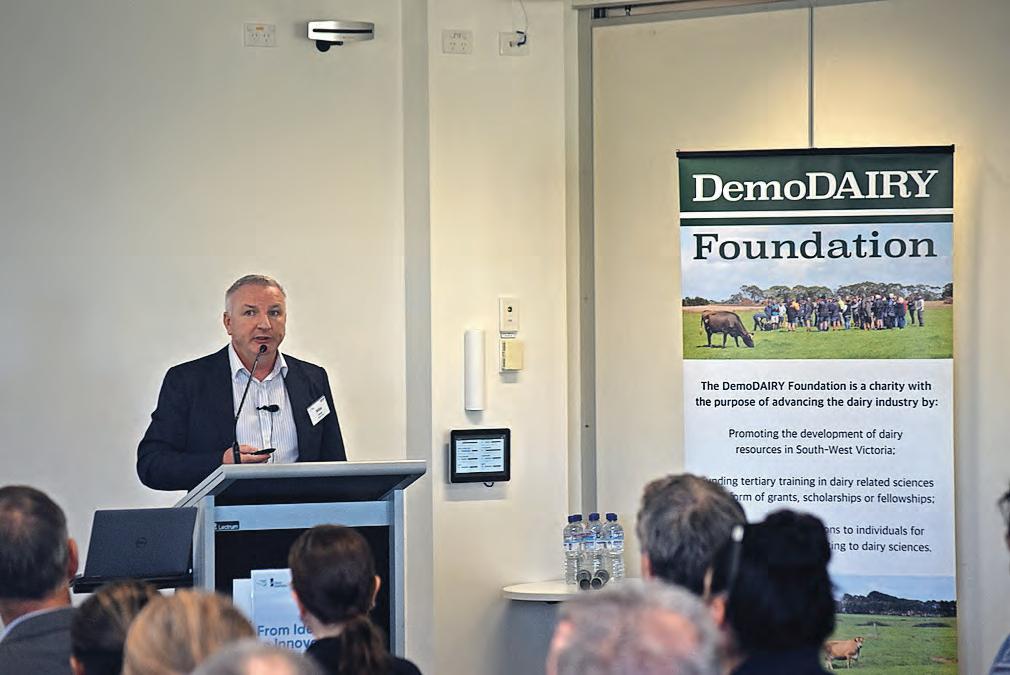







 Paul Douglas (left) Mary Sharma and Mike Brady lead the panel discussion ‘What is Innovation?’.
Paul Douglas (left) Mary Sharma and Mike Brady lead the panel discussion ‘What is Innovation?’.
I HAVE had a few discussions in recent weeks with farmers who are struggling to remain in premium cell count and how they might be able to manage a cell count issue.
As always, I remind them that unless we know exactly what we are dealing with, it is hard to make a sound plan.
In many cases, the first contact that I have is when the BMCC is already out of premium and the farmer is desperate to get back under whatever their factory requires.
Equally as often, I am faced with a dreadful lack of information on which to base my advice and so we start a process of investigation because there is unfortunately no ‘one size fits all’ approach to managing a persistently high BMCC.
Firstly, I need to know whether the high cell count is associated with clinical mastitis (cows presenting with abnormal milk) or whether the infection is sub clinical (the cows have an intramammary infection but do not show clinical signs) or whether both problems are occurring concurrently.
Many (most?) herds in my experience keep records of clinical mastitis cases, but that information is frequently not in a readily available form to analyse.
Herd recording where individual cell counts are available for each cow is now only available in the minority of herds.
It is much less common for herds to have culture or other testing results that identifies the causative agent in their clinical mastitis and it is exceptionally rare for herds to have culture results from sub clinically infected animals at the beginning of an investigation
In other parts of the world, clinical diagnostics and herd screening prior to dry-off is becoming far more common and forms a pillar of the responsible use of antimicrobials in those countries and I would love to see us following this lead.
I usually start by screening the bulk tank with a PCR test to look for mastitis pathogens and to determine whether the common contagious pathogens are present.
I usually also take advantage of this opportunity to check the herd antibody levels for BVDV and if indicated check for PI animals in the milking herd.
It is essential to ensure that the milking machines are tested and in optimal condition and that all important rubberware is replaced regularly according to the manufacturer’s recommendations
Next, I encourage collection of high quality samples for culture from any clinical mastitis cases, while I organise a herd ‘spot’ test (assuming ISCC data is not available).
I usually spend a little time showing how a high quality clean sample can be collected for milk culture because poorly collected samples are an expensive waste of time if all that you grow are contaminants.


If the farmer is unwilling or unable to perform a herd test, it is possible to ‘paddle test’ the herd using the California Mastitis Test (CMT) to try to identify the high cell count cows.
Either way, once I have identified the highest cell count cows, collecting a sample for culture is the next move.
I like to test a minimum of 10 but ideally 15 to 20 high cell count cows to determine what is the bacteria responsible for the sub clinically infected cows
Once I have an idea whether the problem is predominantly environmental bacteria or contagious bacteria we are much better placed to determine what the next best move will be.
On farms where the high cell count cows are predominantly environmental, it is essential that we look for (and address) the environmental factors that we can manage or control and implement some preventative plans to reduce new infections from the environment.
When the infections are caused by contagious mastitis pathogens, it is essential that we develop plans that will reduce exposure of uninfected animals to the infected animals to prevent spread during the milking process.
Looking for damaged, rough or swollen teat ends is an important part of the investigation to determine if over-milking or vacuum/pulsation issues may be present.

Recently, I have been using some high-tech gadgets that measure milk flow, teat end vacuum and pulsation during milking and these can give me information on how the milking machines and the staff are performing when the machines are in use.
Teat spray application and concentration are checked and corrected if necessary.
Ultimately, the important message is that unless we identify the causes of high BMCC, we cannot implement the best prevention and treatment strategies.
Culling and drying off infected cows plays a part, but unless we identify the cause, prevent new infections from the environment or from contagious animals and manage milking routines to reduce risks, the same pattern of cell count creep will occur every year causing unnecessary stress and loss.
Dr Robert (Rob) Bonanno is the Regional Veterinary Lead for ProDairy in Gippsland and northern Victoria.
•
•
•

Farmers are reminded to ensure they provide adequate shelter for their livestock if there are severe weather events forecast over the remainder of summer.
Agriculture Victoria principal veterinary officer Dianne Phillips said localised severe weather during January had seen a higher number of deaths in vulnerable livestock in some areas of Victoria.
“Severe weather can include high winds, concentrated rainfall and/or hail and sudden temperature changes, which can impact livestock even in the warmer months of summer,” Dr Phillips said.
She said vulnerable groups of livestock were those which were more prone to the effects of exposure. These could include stock with newborns or recently weaned animals, as well as stock with parasitism or other underlying diseases associated with weight loss, anaemia or low protein levels.
“Farmers are encouraged to also ensure livestock are up-to-date with routine stock health management requirements, such as drenching and vaccination
programs, and to conduct regular inspections, monitoring for and treatment of diseases,” Dr Phillips said.
“This will help your animals stay healthy and be able to better adapt to changing conditions.
“Cold weather increases an animal’s energy requirement to keep warm. As a result, when storms are forecast, additional supplementary feed before the event should be considered.
“Adequate shelter can include paddock shelter belts (often retained vegetation and tree plantings), sheds or other buildings where stock can shelter on the side out of the wind, and undercover yards like those at a shearing shed.
“Isolated paddock trees can provide some shelter for livestock but can also act as a conductor for lightning strikes in a thunderstorm, which, in some circumstances, can lead to sudden death of livestock sheltering underneath the tree.”
Further information is available on the Agriculture Victoria website.




 BY SOPHIE BALDWIN
BY SOPHIE BALDWIN
MURRAY DAIRY has released its final report for its Fodder for the Future program.
Driven by a volatile operating environment including limited access to irrigation and high water, the Murray Dairy region has undergone significant change, resulting in a reduction in traditional grazing systems and summer irrigation, flat calving patterns and an increase in alternative fodder solutions including winter cereals, vetch, legumes, maize and sorghum.
Engaging 2016 farmers and service providers, the Fodder for the Future program was aimed at assisting communities to develop strategies to maintain and increase economic activity.
The project established a two-year cropping trial over six sites to monitor the performance of different crops.
Winter cereal crops, vetch and other legumes were monitored over five sites, along with one trial site that monitored summer and winter forages.
Each site was representative of climate and soil type as well as geographic spread for dairy farmers and livestock producers.
Murray Dairy research and innovation coordinator Yvette Williams joined the project at the halfway mark.

 Vetch growing at the Riverine Plains trial site.
Vetch growing at the Riverine Plains trial site.


















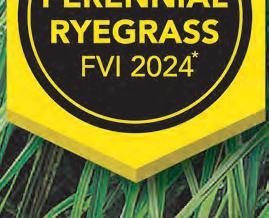



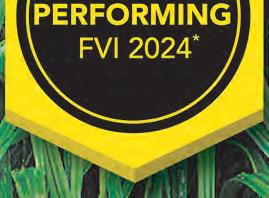



Array
4front





Maxsyn
Samurye


She said the Fodder for the Future final report was a fantastic summary and the result of a large amount of work from right across the region.
“Overall we are a diverse region with a lot of variability and the best thing a farmer can do is plan for the season and grow the most appropriate crop, no-one can afford to get it wrong when building a feed base and bank is so essential,” Yvette said.
She said a key output of the project had been the development of the Fodder for the Future Network — a group that spans key organisations and has emerged as a critical player to deliver key information both technical and practical.
In 2022 the project was seriously impacted by widespread flooding with sites at Mitiamo and Kerang completely inundated — outcomes for each trial site were assessed individually however an overall analysis is presented below.
It is well known post flowering, the quality of many crops particularly cereal declines rapidly while dry matter (DM) yield continues to increase.
The yield and quality relationships with growth stages highlights the variation between crop species and the DM yield penalty.
While dairy farmers focus on feed quality for lactating cows, lower quality forages can be suitable for young stock.
A key area for investigation moving forward is the economics of a trade off around yield verse quality.
Total nutrient yield may be an important decision making factor in some businesses and will drive the overall quality of forage and what type of stock it is fed too.
The nutrient profile of harvested forage changes depending whether it is preserved as silage or hay.
There are more quality losses for hay compared to silage assuming they were both cut from the same crop on the same day and preserved under ideal conditions.
Individual site seasonal conditions played a big role in variations of yield and quality.
The combination of strategies, crop selection and unseasonal conditions demonstrated how difficult it can be and complex interactions between these factors led to hugely variable results.
Increasing growth stage at cutting increased yields for barley and wheat but not oats.
There was a general decline in ME and CP concentrations as growth stage increased, however some observations were inconsistent.
Oats were usually higher yielding than wheat or barley.
Time of sowing and rates had variable effects on yield and nutritive characteristics.
Yields increased with nitrogen use but did plateau at higher levels.
There was no consistent effect of nitrogen applied on ME.
CP was highest at high nitrogen input levels and NDF was variable.
Vetch
Challenging growing conditions across both years resulted in a large proportion of low quality vetch samples, with only a quarter meeting AFIA A1 specifications.
Overall data shows no strong relationships between cutting stage and hay yield or quality, however a strong relationship between time of cutting and quality was found in Birchip Cropping Group’s year two trials — early maturing types can be cut at a more mature stage than late maturing types while still maintaining quality.
Common vetches tended to have better
quality parameters than wooly pad or purple vetches.
Impact of variety on yield varied across sites with Birchip Cropping Group recording more variety impact than southern growers.
Time of sowing and rate were not tested on both sites limiting data.
Irrigation had minimal effect due to timing and volume of rains.
Faba beans
Faba beans produced large yields with good
nutritional characteristics with quality improving as maturity progressed, however a high lodging tendency and high water content means there are practical challenges around harvesting and ensiling.
Maize and sorghum forages
Forage harvested from grain and forage sorghum varieties can achieve quality characteristics comparable to maize under the seasonal conditions experienced.
Maize was still a high yielding crop and had
better water use efficiency even under mild to moderate deficit irrigation strategies.
Forage sorghum had comparable yield and WUE, starch concentration in the maize crops was lower than expected.
Fodder for the Future is a joint initiative involving Murray Dairy, Agriculture Victoria, Birchip Cropping Group, Irrigated Cropping Council, The University of Melbourne, Riverine Plains, and Southern Growers.
The report is available in hard copy or can be found on the Murray Dairy website.


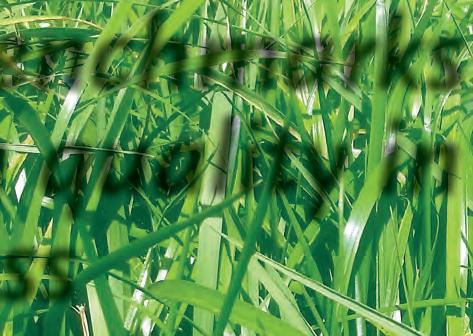

Rampage leading total yield across 5 years, 5 trials under dryland conditions (2019-2023)
Late Spring and Summer: Rampage highlights its strong late spring growth, ideal for silage and hay production (2019-2023)
Rampage is Notman Pasture Seeds exclusive new tetraploid annual ryegrass developed in partnership with leading plant breeders Cropmark Seeds for Australian dairy farmers in mind.
We believe Rampage is the all round package suiting a range of needs of dairy farmers. In its early performance, Rampage is extremely fast establishing assisting early feed requirements for dairy farmers needing quick late autumn and early winter feed.
Rampage continues to have strong winter and spring production and rapid re-growth potential after each grazing. Staying leafy late into the season, Rampage has the ability to maintain high growth for longer, a huge plus for flexibility and milk production.
The end result? Rampage is the highest yielding annual ryegrass in multiple Cropmark trials in Australia (2019-2022) and in the National Forage Variety Trials® 2022 summary (all NZ) with exceptional yield across all seasons.
Tetraploid Leading yielder 30-45 kg/ha +20 days heading date
Rampage has been extensively trialled across Australia & New Zealand, with the focus on quick establishment, winter growth and high levels of leafy production late into spring and early summer (+20 days heading date).
Peter and the team at Notman Pasture Seeds followed it’s elite performance consistently throughout the selection process, in the pasture trials on farm and growing season to ensure Rampage met the demands of current commercial farming operations.
Ultimate choice for annual flexibility and growth
Growing leafy, quality, late heading Rampage ryegrass right through the silage and hay season is a valuable tool for farmers looking to maximise flexibility and production – and this new variety makes the most of late season soil moisture. The elite Rampage has the ability to maintain high productivity for longer, enabling excellent pasture utilisation in late season environments.
THE HEALTH of the soil beneath our pastures emerges as the cornerstone of sustainable and productive farming.
FarmTech Machinery, a pioneering Australian farm machinery company, has long understood this foundation.
Since introducing Australia's first soil aerator in the 1990s under the renowned Aervator brand, FarmTech Machinery has led the market in innovative soil health solutions, achieving global recognition with more than a thousand units sold.
Soil health is the heartbeat of productive pastures. The key to unlocking this vitality? Soil aeration.
FamTech says this process, more than a mere farming technique, is a transformative practice proven to enhance soil productivity and foster robust pasture growth.
They say the science is clear: aerated and fractured soil creates an environment where aerobic bacteria can thrive. These beneficial microorganisms play a crucial role in making essential nutrients available to plants, thereby boosting their growth and improving the nutritional content of livestock feed.
Since introducing Australia's rst soil aerator in the 1990s, FarmTech Machinery has led the market in innovative soil health solutions.
Aeration has been shown to maximise the effectiveness of fertilisers. By creating pathways to the root zone, fertilisers and compost are more efficiently absorbed, directly benefiting plant health and yield.
Furthermore, the structural improvements to soil from aeration enable better water infiltration, reducing run-off and enhancing the soil's water absorption. This not only conserves water but also ensures that plants have a more resilient root system, making them more drought-resistant.
FarmTech Machinery recommends the pairing of the Aervator with a SEEDX Air Seeder to achieve what they term the ‘one-pass renovator’.
This combination not only fractures the soil but also allows for oversowing in a single pass, saving farmers time and resources. This innovative approach is the key to establishing productive permanent pastures.
FarmTech’s R&D division has been working hard to develop practical and dependable solutions for Australia’s farming challenges.
‘Maxi Series’ multi-gang system double the tines and allows for effective aeration or light cultivation to be performed in a single pass. Precise GPS rate controlled air seeding equipment that is Australian-made.
FarmTech Machinery remains committed to building practical solutions for farmers by providing the tools they need to succeed.
“Together, we can cultivate a future where productive pastures are the norm, not the exception.”



Appeal Italian ryegrass is a very persistent and very high yielding diploid Italian ryegrass.
Appeal has shown consistently high yield performance in trials with fast establishment, high winter, early spring production, and an ability to hold on well over the summer, even under moderate insect pressure.
Being late heading, Appeal will maintain forage quality for longer into summer.
Appeal produces high quality forage, of high nutritive value, high digestibility and high palatability. In addition, it has strong disease resistance including against rust, resulting in improved animal acceptance.

And unlike some Italian ryegrasses, Appeal will not cause grass staggers.
APPEAL IS
FarmTech Machinery recommends the pairing of the Aervator with a SEEDX Air Seeder.

I HAD intended to vent this month about the industry’s emerging obsession with ‘peer reviewed’ data but decided against it to deal with an equally sizeable frustration — mixed agendas with mixed species.
Let me explain.
An important element of a mixed species pasture, which translates into cover crops or intercropping in broadacre and row-cropping respectively, is diversity. And the more diverse the better.
Keeping the discussion in-house, our ideal pasture mix is comprised of species that provide different leaf shapes and sizes, operate in different zones in the sward and soil, and have divergent root types.
This is all to simultaneously achieve:
Firstly, more efficient interception of light. The name of the game is occupancy. That is, the entire ground should be covered pre- and post-grazing with leaf to always trap much of the incident sunlight possible.
Sunlight fuels growth so the more the better. In this iteration, we can ignore pre-grazing canopy closure (shading which is an anathema to a monoculture) as this will be more than compensated for by my second point.
Secondly, the cooperation created through a community of plants via exudates (C-rich sugars and acids) and trading of nutrients and water. In this new world, plants help each other out so the little guy at the bottom of the sward offers up a trade (for example, minerals brought up from the deep through its taproot) in exchange for liquid sunlight (plant sugar).
Thirdly, occupancy of the root zone is another key goal. For this we need taproots, coarse fibrous roots, fine fibrous roots, rhizomes and so on. These are what tap into nutrient and water sources and build soil structure.
Finally, and more importantly, each root type brings with it, and supports via exudates, a fundamentally different population of microbes which operate in different zones which solubilise, transform, produce and transport, a wide assortment of minerals and other nutrients to the plant. These are directly (while the plant is alive) and indirectly (as it decomposes) traded by plants as currency and communication.
Matrix® Enhanced perennial ryegrass truly is the benchmark for production and performance on Victorian dairy farms. It is thoroughly proven, reliable, persistent and high performing. Many farmers would argue that there is simply no better perennial ryegrass.

The cows won’t argue with that either. They find it very palatable and eat it readily.
Farmers tell us the milk production lifts when the cows are grazing Matrix.
Matrix is suitable for all pasture renovation, including over-sowing and is great value for money.
To meet our criteria for an effective mixed sward we need:
ɋ At least 10 species of plant (and maybe up to 17 after which there is little additional benefit) representing a minimum of ...
ɋ Seven plant families. This is easier than you think, and you can look at which families your most common weeds are in and find a domesticated species within that family as your mixed sward representative. And ...
ɋ Five root types. The aim of these is to occupy all the A horizon, a good chunk of the B and penetrate deeply into the C.
Most seed companies are now offering mixed species options which is a great step forward. Just don’t go mad. Once you get past 10 species there is little further gain.
And my other caution would be to not worry about how many species are still in the sward after six or 12 months as long as they all germinated. About half of what we want a mixed sward to do occurs underground and has little to do with what we see above.
Ad each of these things is supported comprehensively by peer-reviewed literature. But more on that next time.
and proteins are assimilated by plants after root (containing proteases) are used to cleave proteins smaller peptides and individual amino acids that can be by plants.
combination of smaller peptides and individual amino acids steady and dynamic pool of accessible nitrogen for plant assimilate amino acids with varying efficiencies. The process influenced by the type of plant and their root architecture, the of the root exudates, the amino acid concentration in soil microbe composition and abundance. nitrogen in fish extracts is less prone to leaching because acids are readily available to the plants and soil microbes assimilation. Amino acids used by the soil microbiology (and later become part of the soil organic matter.
seaweed extracts are synergetic. The rhizosphere, where roots interface with soil and microbes, is an important amino acid and nutrient uptake. Seaweed extracts root growth which enables the effective utilisation of the nitrogen supplied by the fish extracts.


are recognized as natural chelators. Chelating agents attracted to, and protect, elements from being chemically each other (e.g. phosphorous and iron). Fulvic acids are water soluble.
Seasol seaweed extract is rich in organic content, has a high molecular diversity and contains a range of trace elements. Seasol seaweed extract has 17% total solids content and 3.7% (w/v)
Potassium (Typical Analysis April 2017). Seasol seaweed extract is manufactured from two types of seaweeds producing a refined liquid seaweed extract and filtered to 150 micron for agricultural use.
Seaweed extracts are effective across a wide variety of plants and soils and have many beneficial plant growth and plant health properties (Arioli et al, 2015; Shukla et al, 2019; Islam et al, 2020):
Increases plant productivity - Field trials have been used extensively to demonstrate that seaweed extracts improve plant growth, yield, fruit quality. The benefits have been found across a wide variety of crops such as grapes, sugarcane, almonds, potatoes, tomatoes, strawberries, and garden plants.

Increase tolerance to plant stress - Seaweed extracts offer increased tolerance to a diversity of non-lethal stresses including heat, drought and cold stresses.
expression networks.
Increase root growth - Plant roots are used to capture for plant growth and interaction with functionally microbes that benefit plant growth and soil ecosystems. extracts increase root structure and particularly ability enables plants to better utilise the nutrients and feed microbes with exudates released by system.





combined attributes of ready uptake by the leaf surface and chelate make fulvic acid a natural partner for foliar applications. Fulvic acids are lightly coloured, compared acids, making fulvic acids unlikely to stain when applied Fulvic acids can also be successfully applied to soil but larger humic acid substances used for applications to
to use liquid formulations of fulvic and humic acids obtained by processing the raw resource to obtain a uniform The refined filtered liquid is without impurities that may raw material. Seasol’s fulvic acid product is organically





Healthy and productive plants and crops require a complete and balanced supply of nutrients throughout their growth cycle. Often much of this nutrient is delivered via the soil, or growing media, through the plant root system. However, foliar application of crop nutrients offers a method of providing specific nutritional inputs when soil application is inadequate or limited.







Seaweed meal is liquefied by chemical hydrolysis extraction. Seaweed extracts are complex and nature which makes their precise characterisation complex seaweed extracts are biological rich plant responses and growth systems. Rather composition, Seaweed extracts rely on plant demonstrate their beneficial plant and soil properties.
Chemical composition tends be used for quality manufacturing of seaweed extracts. Their ability to promote root structure expands the beneficial associated with the soil carbon and nitrogen ecosystem














This could be due to unusual soil conditions such nutrient lock-up or deficiency, or simply due demand for one or more essential elements. offers a method of rapidly addressing specific by directly applying the required nutrient to the can form part of a complete nutrient management based around known crop requirement with soil providing additional guidance.
Enhanced uptake of foliar applied nutrients.

Added benefits of root growth and stress tolerance.

Increased plant vigour and productivity. Provides vitamins Added

Increased plant vigour and productivity


Provides plants with proteins, vitamins and amino acids



















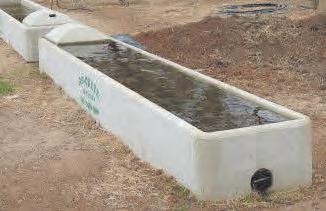












Seasol’s Trilogy fulvic acid product is organically certified and combined with kelp (Seasol), for root growth and increased tolerance to plant stress.
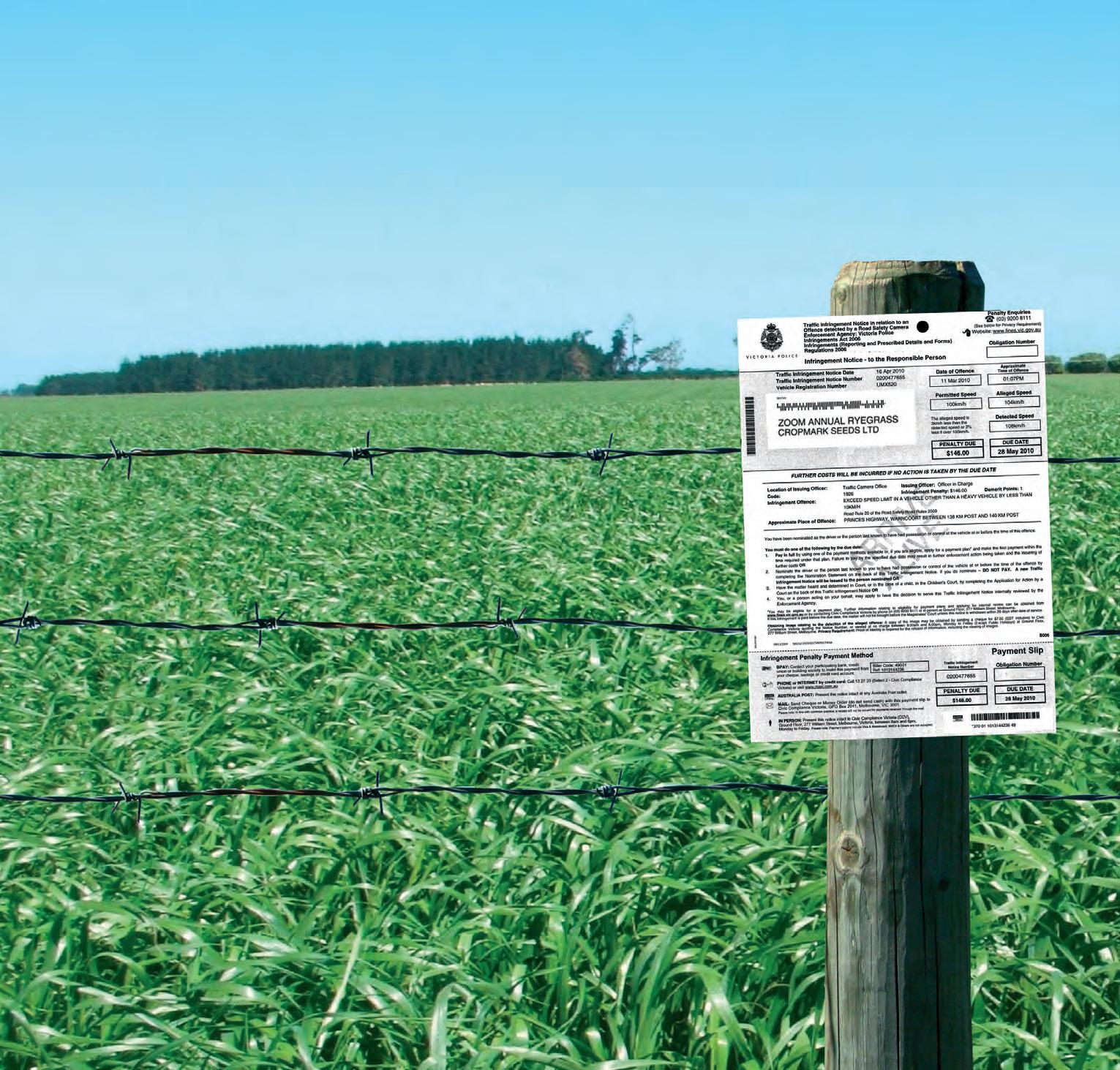
FOR EFFECTIVE uptake, fulvic acids are organic compounds usually derived from deposits of ancient decomposed organic material.
Along with humic acids, they are often found within or near deposits of lignite (brown coal) or leonardite (weathered brown coal).
As they have been formed through long processes of natural decomposition from a range of substances they are comprised of groups of organic molecules as opposed to a single compound.
They contain a high carbon content. Fulvic substances are therefore natural in origin and have been found to be beneficial to plants.
These benefits include root stimulation, increased leaf chlorophyl content and increased productivity and yield.
The small molecular structure of fulvic acids allows them to be easily absorbed by plant leaf surfaces.
Fulvic acids are recognised as natural chelators. Chelating agents are attracted to, and protect, elements from being chemically bound to each other (for example, phosphorous and iron). Fulvic acids are also highly water soluble.
These combined attributes of ready uptake by the leaf surface and an ability to chelate make fulvic acid a natural partner for foliar nutrient applications.
Fulvic acids are lightly coloured, compared to humic acids, making fulvic acids unlikely to stain when applied over foliage.
Fulvic acids can also be successfully applied to soil but typically the larger humic acid substances used for applications to soil.
Convenient to use liquid formulations of fulvic and humic acids are obtained by processing the raw resource to obtain a uniform product. The refined filtered liquid is without impurities that may exist in the raw material.
Seasol’s Trilogy fulvic acid product is organically certified and combined with kelp (Seasol), for root growth and increased tolerance to plant stress, plus PowerFish providing amino acids beneficial to plants creates an easy method of foliar application.
WITH DRIER times still predicted for 2024, moisture management is set to become even more critical in order to maximise soil and paddock productivity.
Australian manufacturer K-Line Ag specialises in a range of high-quality and high-performance tillage equipment that has been serving the needs of farmers for more than 30 years.
“In a country like Australia, one of the driest in the world, farmers know just how critical moisture management is,” CNH Industrial Australia and New Zealand seeding and tillage brand leader David Gibson said.
“It impacts crop growth and yield, and overall farm profitability, and if done well can lead to many benefits including improved soil health, reduced erosion, better water use efficiencies and climate resilience,” he said.
“Ensuring soils are well-prepared and ready for rain and associated moisture collection can mean the difference between a great crop and an average one, particularly when good rainfall is hard to find.”
Mr Gibson said K-Line Ag, with its manufacturing base in Cowra, NSW, had developed a range of equipment specially designed for Australian conditions that worked to help optimise soil health and productivity.
The K-Line Ag TrackAttack is a

versatile and effective option when it comes to incorporating moisture management strategies, offering a range of track options designed for various soil conditions and helping to minimise soil compaction and maximise moisture retention.
Mr Gibson said with the TrackAttack, the issue of soil compaction is combatted by facilitating



tram-line farming, a method that limits vehicle traffic to designated areas rather than across the entire paddock.
This is achieved by levelling out wheel tracks, ruts, and uneven terrain, the front row of discs slicing through the ground, loosening and moving soil onto the tram-line, while the crumbler roller follows behind, breaking down clods and leaving a
flat, even surface.
K-Line Ag’s Ripper range also works to solve soil compaction, featuring the MaxxRipper, ThunderRipper and LightningRipper.
“The practice of deep ripping to address compaction and allow for moisture pathways between the surface and sub-surface areas of the soil profile is an important aspect

of well-prepped paddocks and our Ripper range is designed to cater for a variety of farming operations and soil challenges,” Mr Gibson said.
The Trashcutter is an above-theground moisture management solution, particularly well suited to zerotill operations, he said.
Its advanced design lays stubble to one side and then slices the stubble with self-sharpening discs into short lengths. With the Trashcutter, more stubble remains in the soil, helping minimise both wind and water erosion.
Mr Gibson said as farmers start thinking about planting their next crops, it’s a great time to do a stocktake of their tillage equipment and consider the K-Line range.
“It’s all Australian-designed and locally manufactured, ideally suited to our conditions and currently there are good stock levels available through local Case IH and New Holland dealers.”




 The Speedtiller is part of K-Line Ag’s range of Australian-made tillage equipment.
The Speedtiller is part of K-Line Ag’s range of Australian-made tillage equipment.
A TASMANIAN seaweed farmer is ready to hit the market on a commercial level with methane-busting food supplements, but says the government needs to incentivise farmers to take up the product.
Across 1800 hectares of land and marine space at Triabunna on the east coast of Tasmania, Sea Forest has been scaling up production of its livestock supplement made from the Australian seaweed asparagopsis.
Feeding the red seaweed extract to livestock can slash methane emissions by up to 98 per cent.
“We’ve been able to take what was a concept that we’ve been able to demonstrate at small scale into a large industrial operation,” Sea Forest boss Sam Elsom said.
“It’s also about commercialising Australian science,” he said.
In 2020 the asparagopsis food supplement was patented and CSIRO scientists have been working with Meat & Livestock Australia and James Cook University to develop the product.
Since then nine licences have been issued to seaweed growers to supply asparagopsis to the livestock market, and the product has been commercially available to cattle producers since 2022.
For the past 18 months Sea Forest has been working with the Advanced Manufacturing Growth Centre to “scale up” their product to industrial sized processing.
“They have the technology
solution to a very big problem,” the centre’s Jens Goennemann said.
“Through the commercialisation process, Sea Forest has developed a local product with global potential, while generating jobs and supporting global moves to reduce emissions,” Dr Goennemann said.
In last year’s budget, the Federal Government committed $8 million to assist in the commercialisation of asparagopsis, and to promote its use in livestock feed.
One of Sea Forest’s clients is the burger chain Grill’d, whose restaurants started selling the burger ‘Gamechanger’ earlier this year, which is produced from asparagopsis-fed cattle.
At full capacity, the company’s Tasmanian plant will be able to produce up to four tonnes of the product an hour.
Mr Elsom said 10,000 cattle were currently eating his supplement, and that with enough biomass he could help feed the entire Australian dairy and beef herd.
But the seaweed manufacturer said farmers need to be incentivised to buy the supplements.
“Farmers have no way of obtaining any form of financial incentives,” Mr Elsom said.
“We’ve been working with some industry participants at a very small scale, but to create real impact we need large-scale participation.”
“It doesn’t reduce methane unless a cow eats it.”
In 2015 the dairy industry set a goal of reducing greenhouse gas emissions intensity by 30 per cent by 2030.

Sea Forest aims to produce 7000 tonnes a year of asparagopsis by 2028 — enough to mitigate the equivalent of 1.2
million tonnes of carbon dioxide, equivalent to removing 300,000 cars from the world’s roads.








